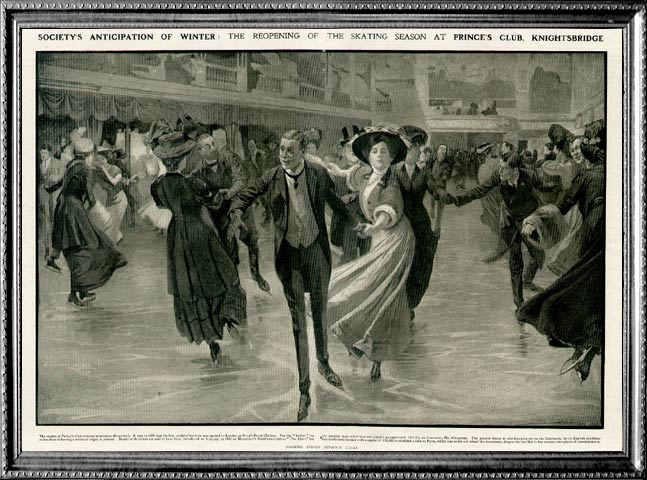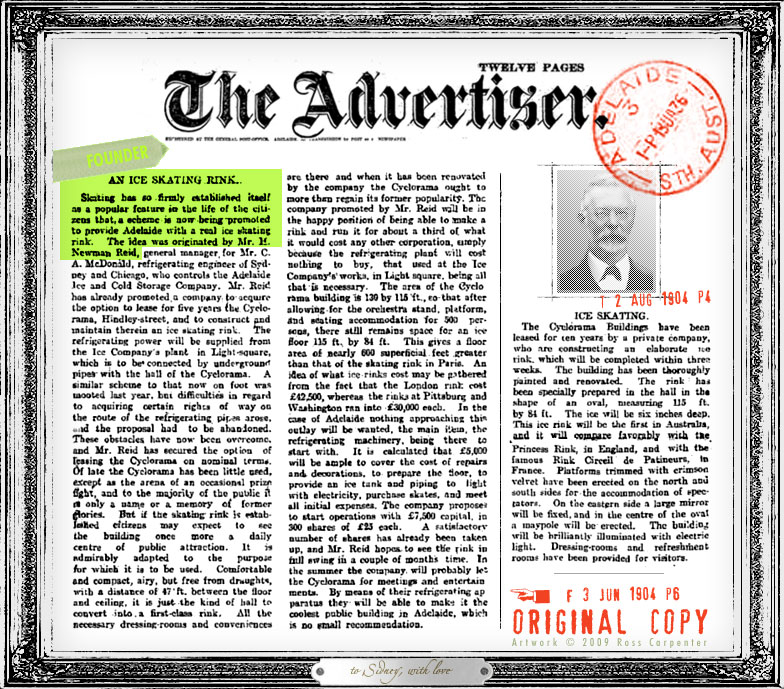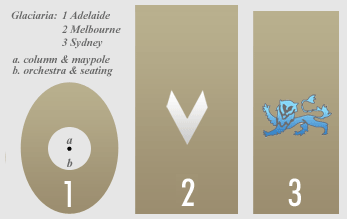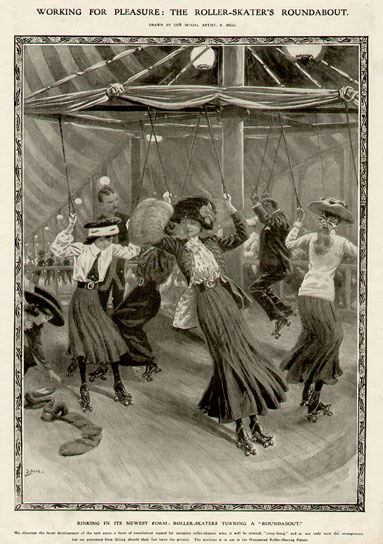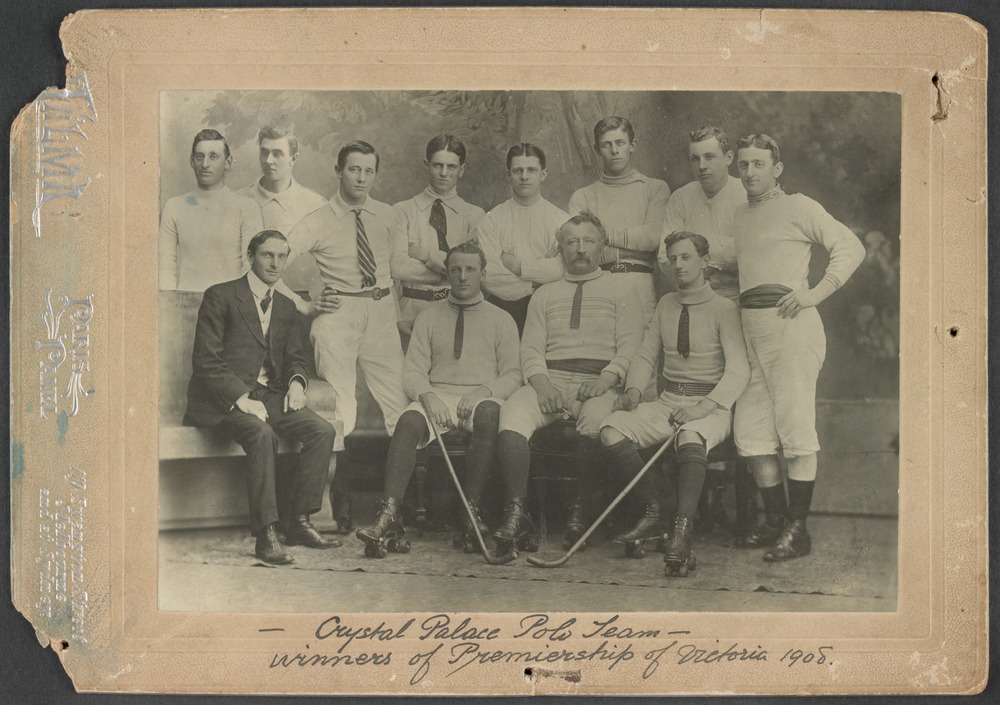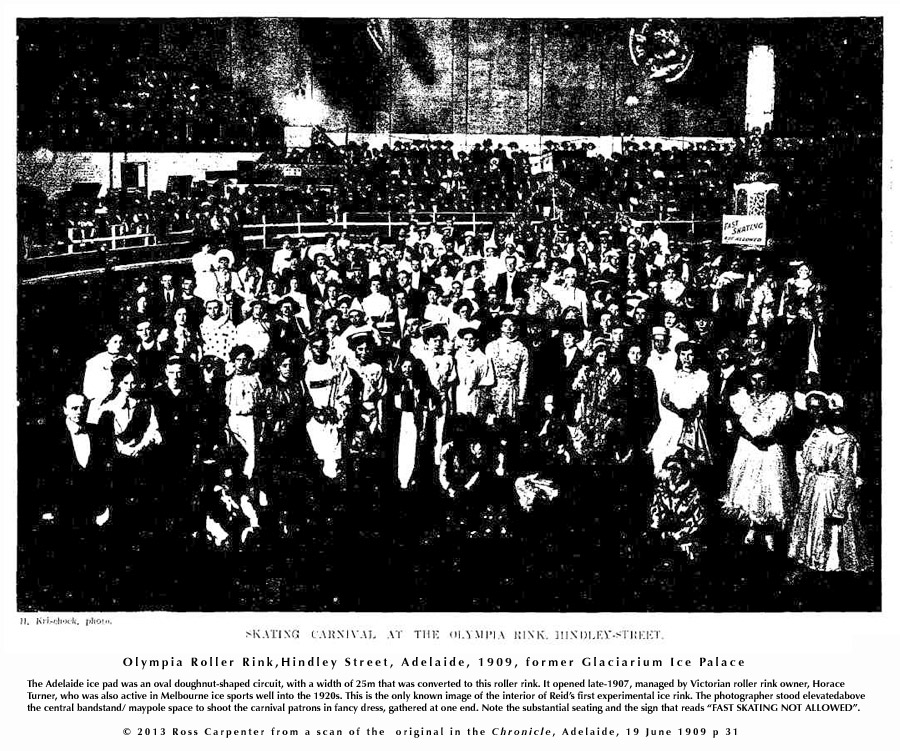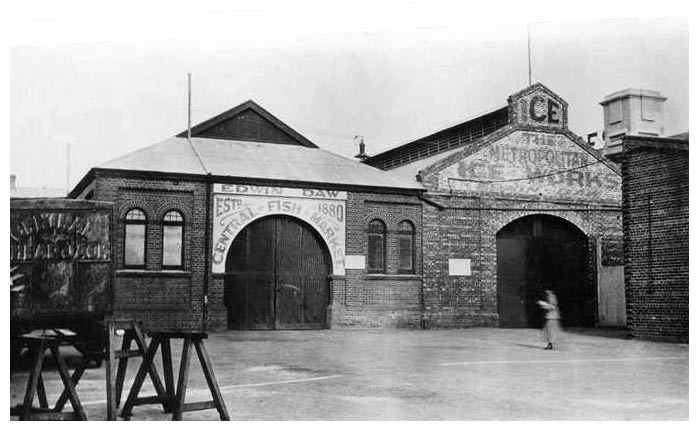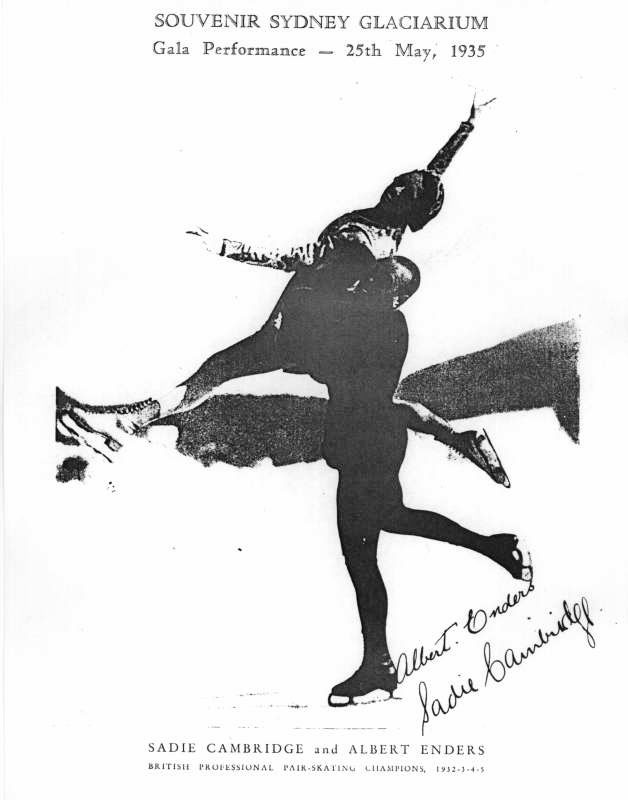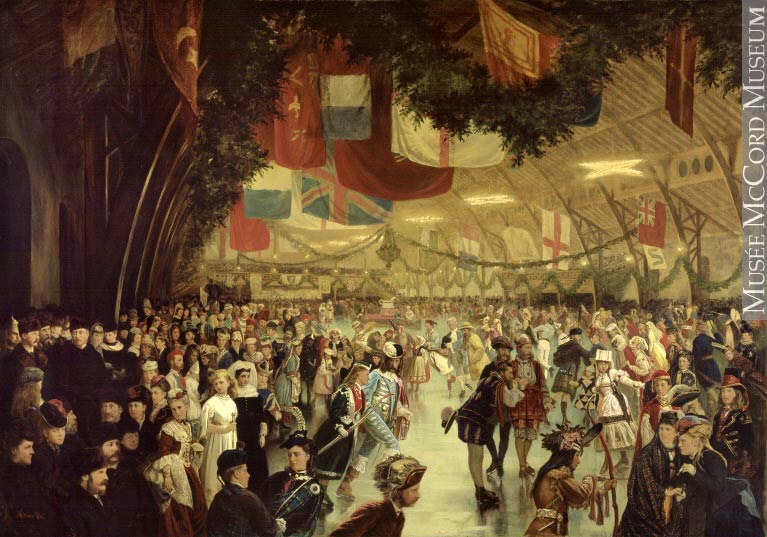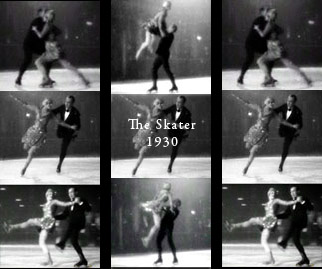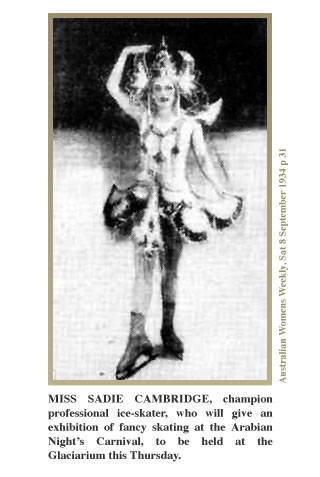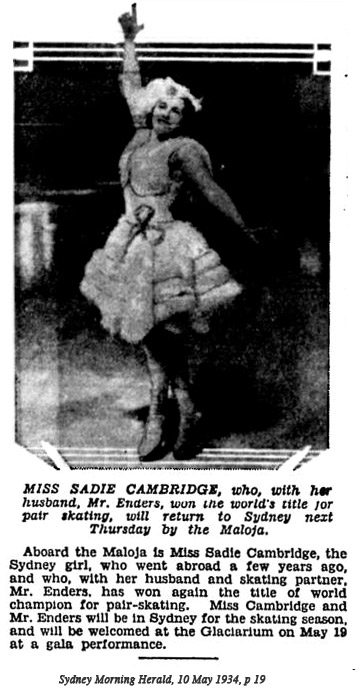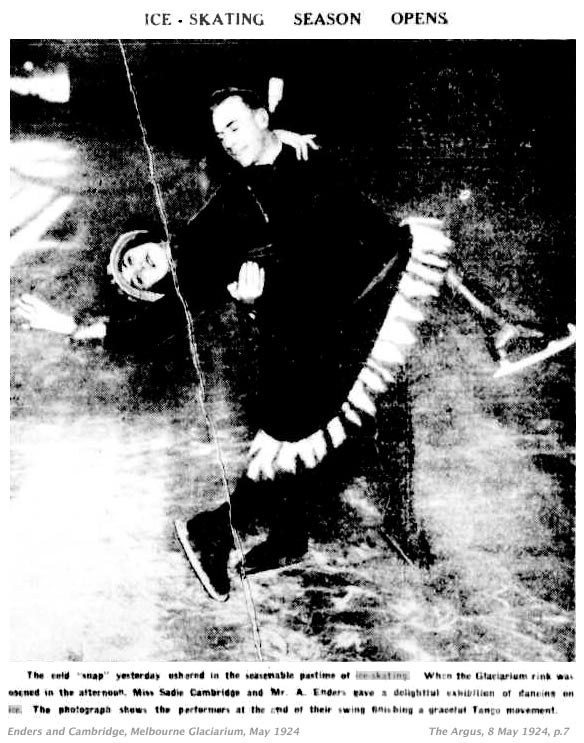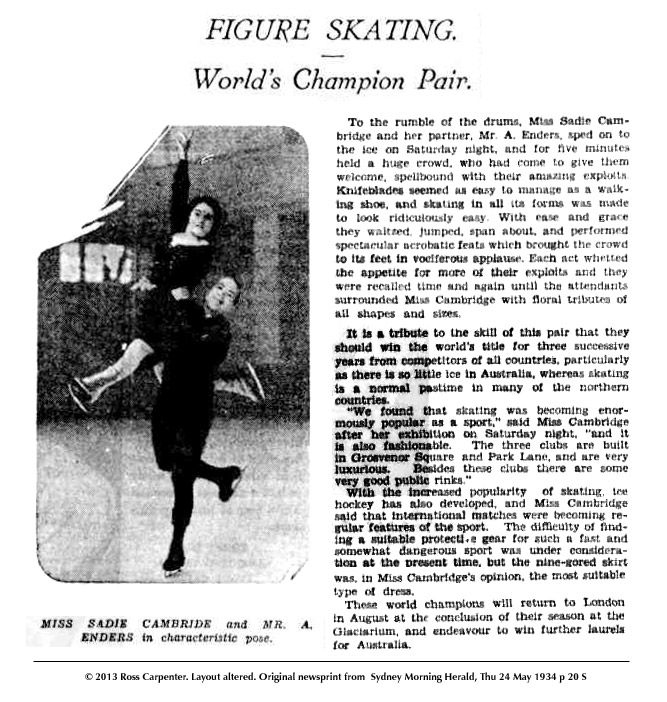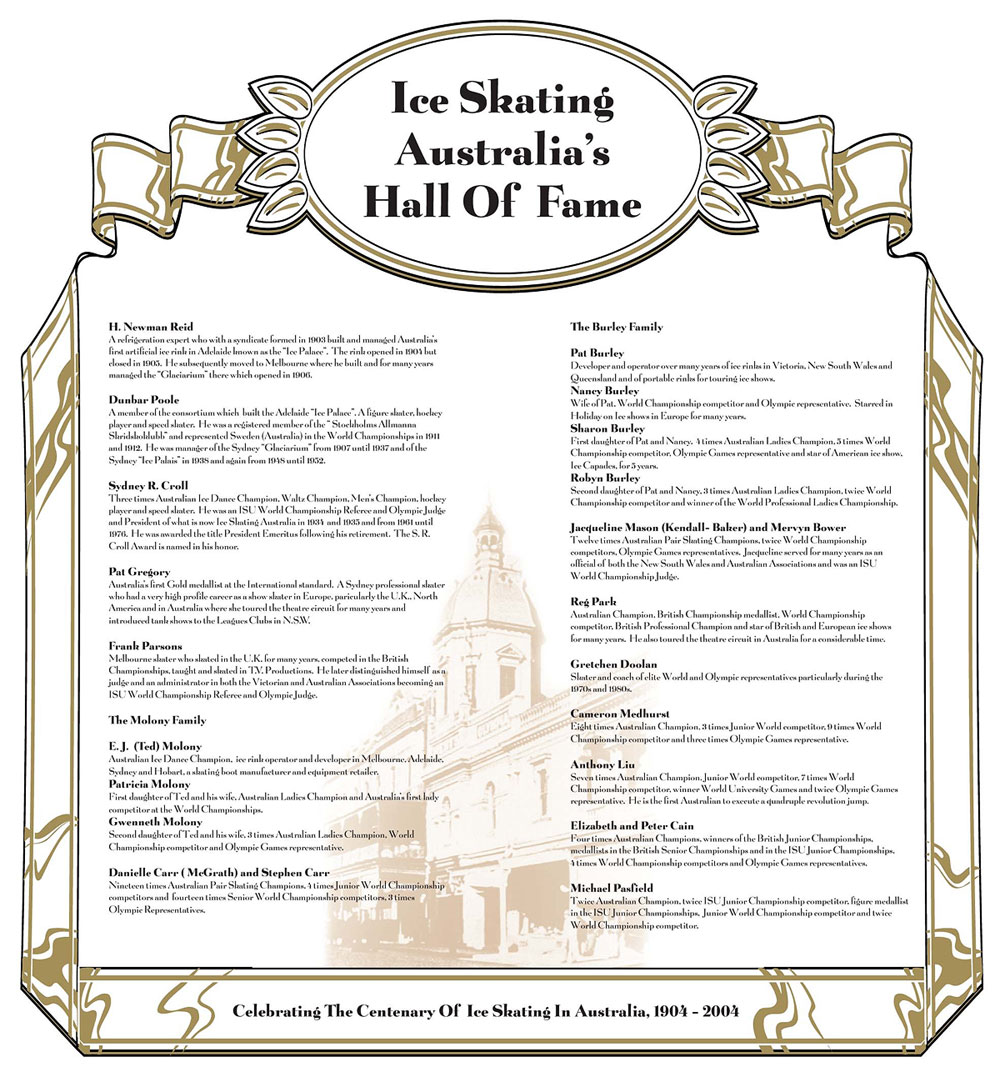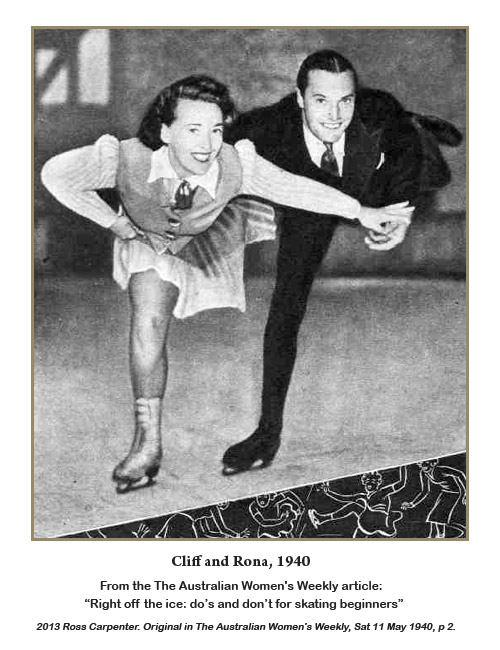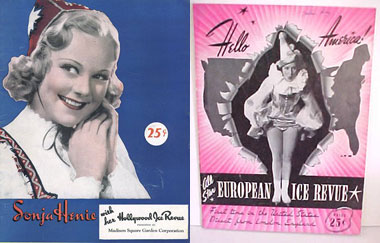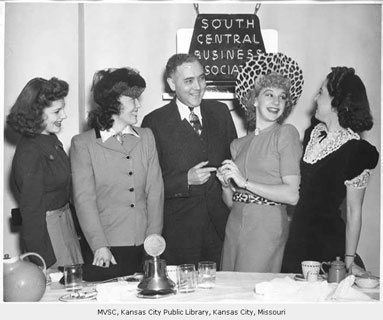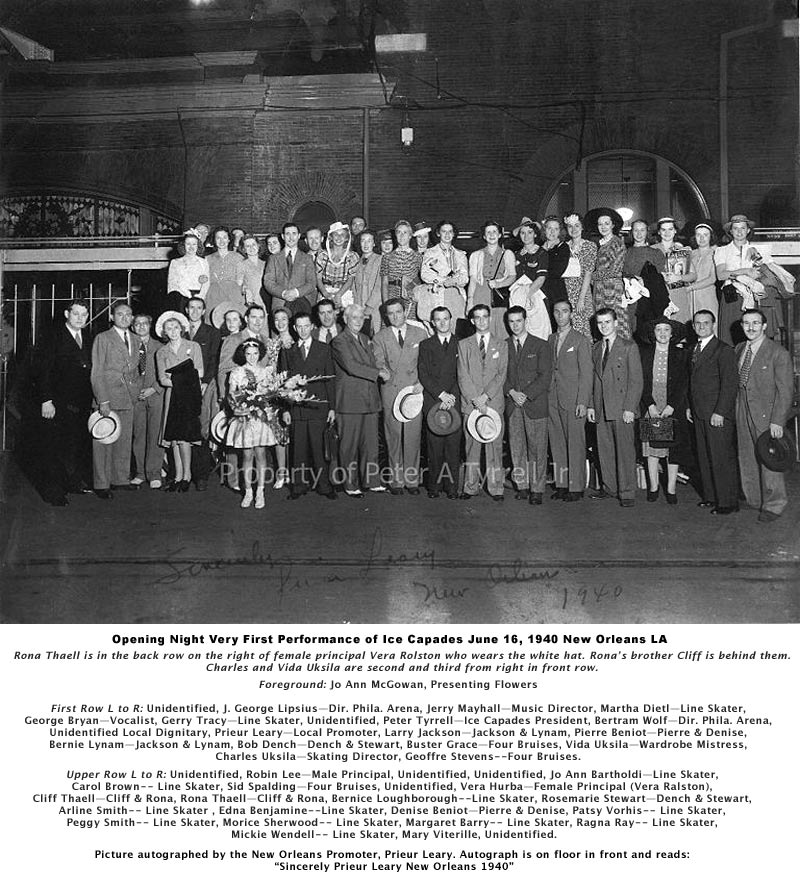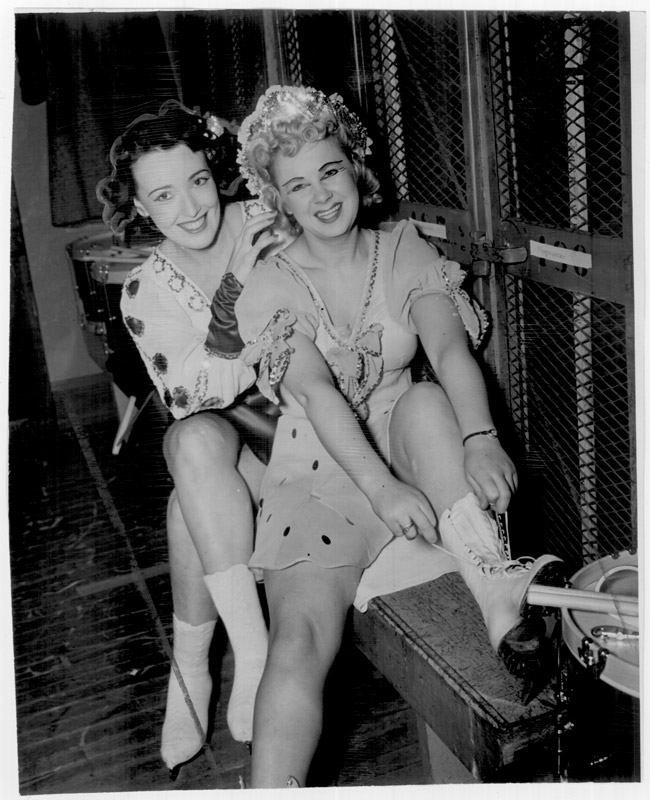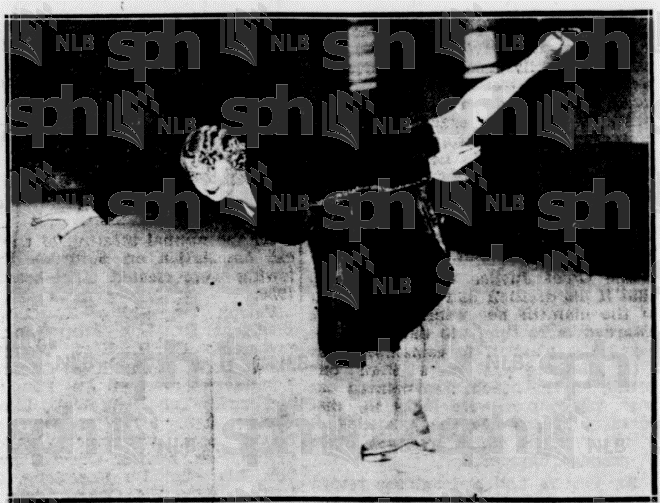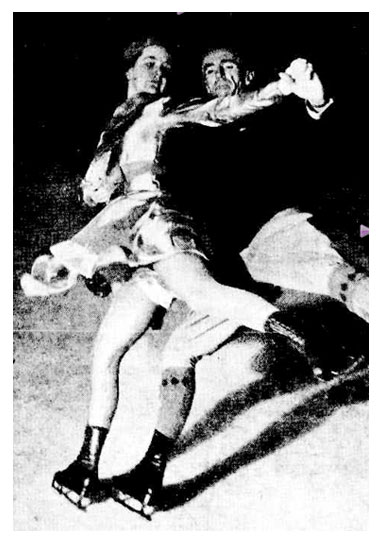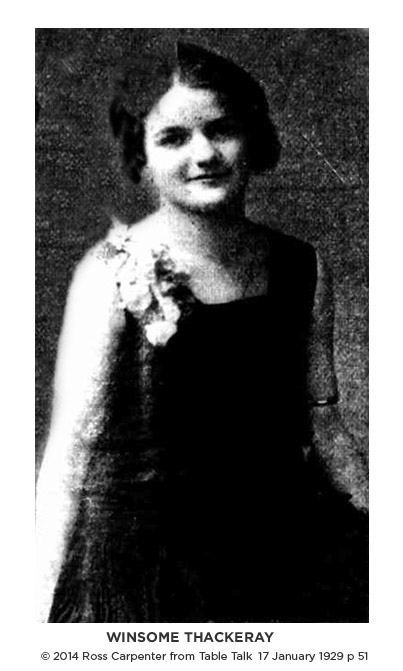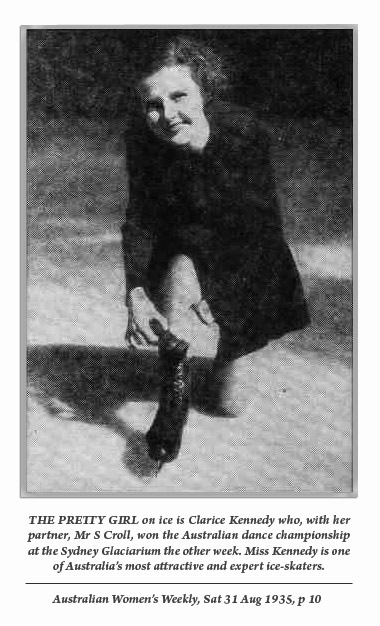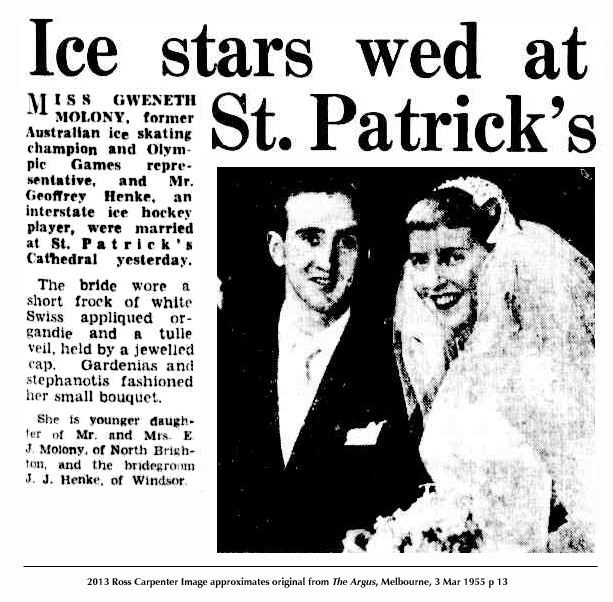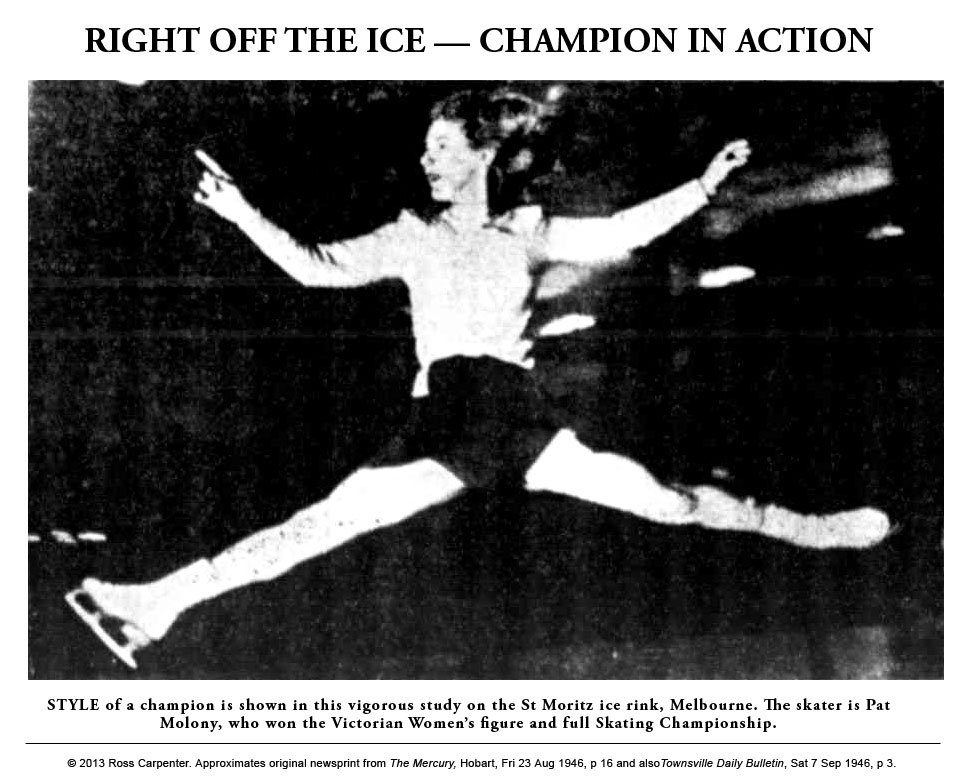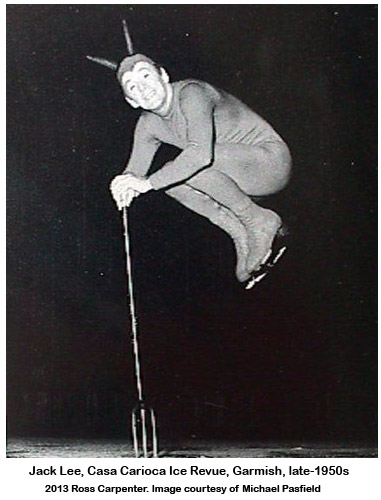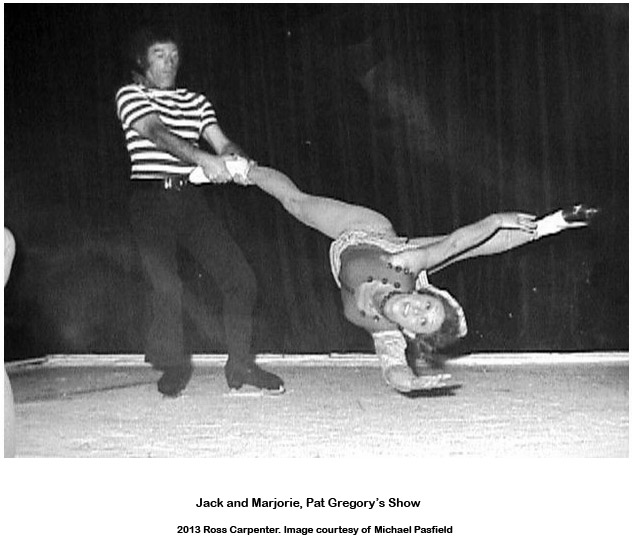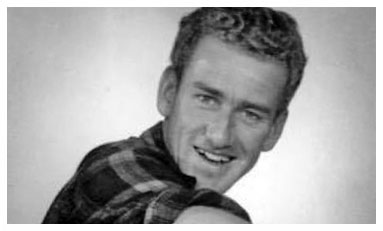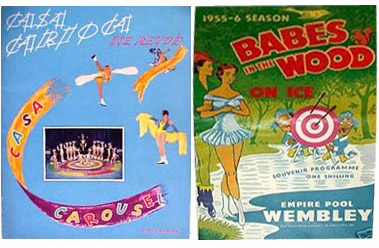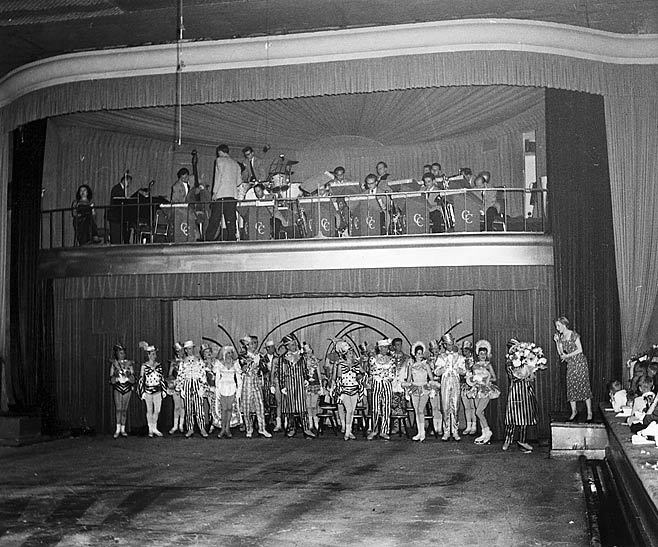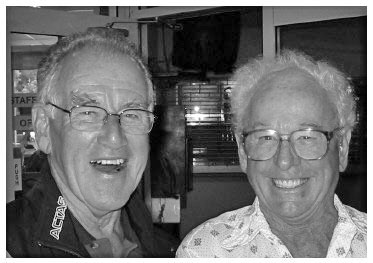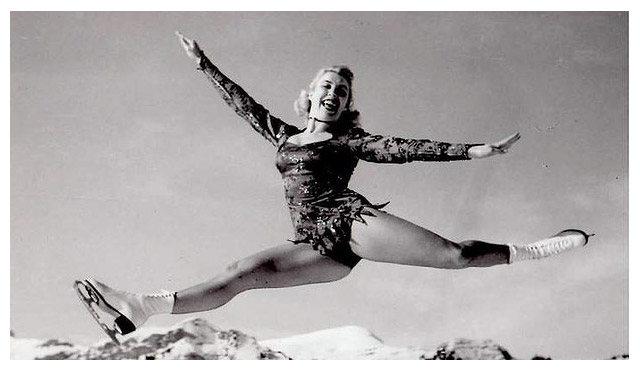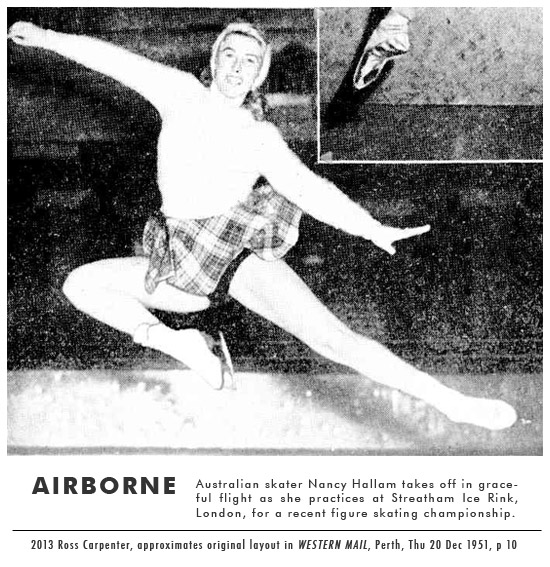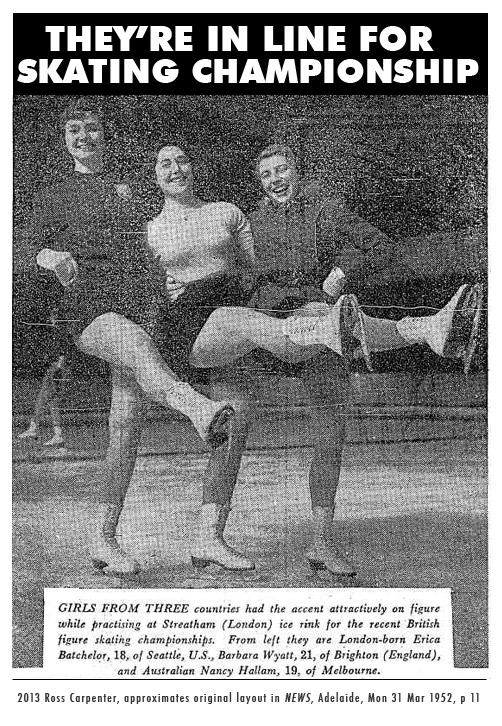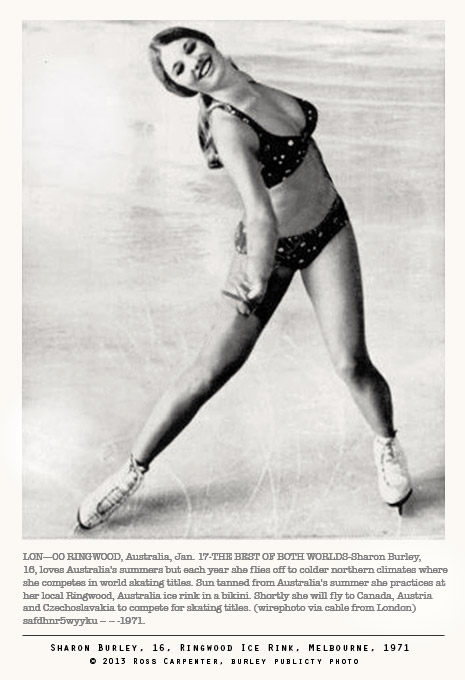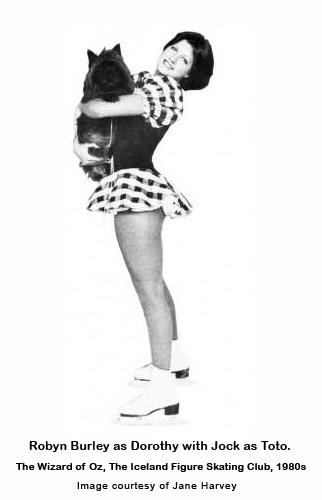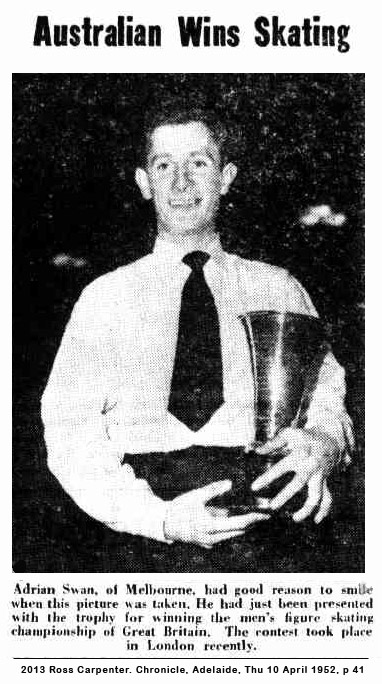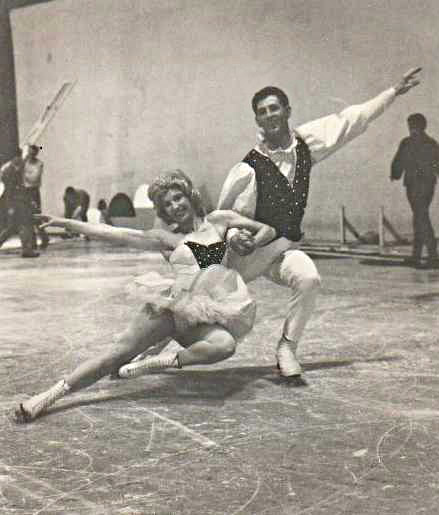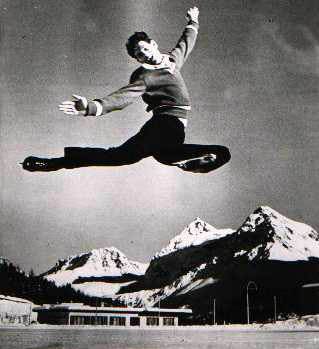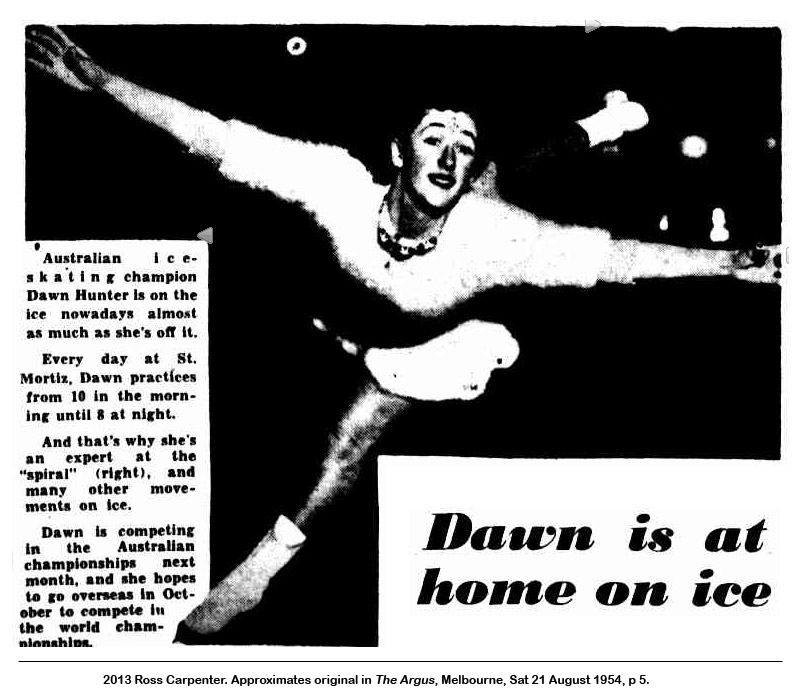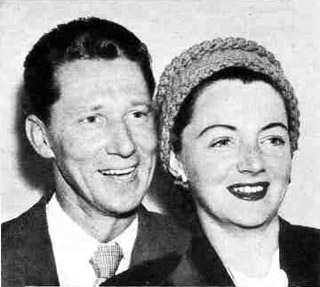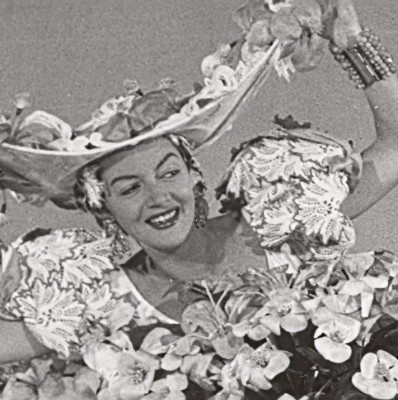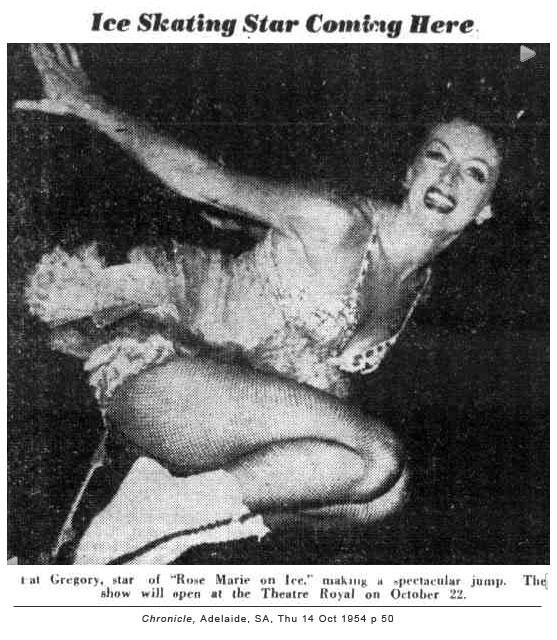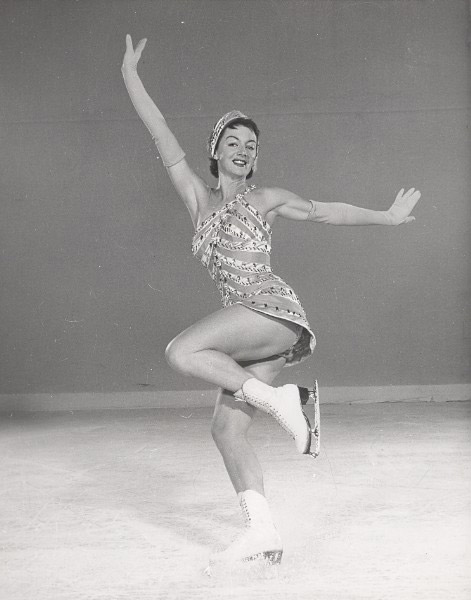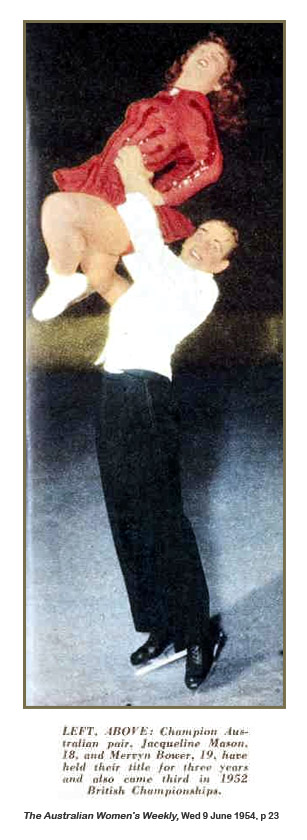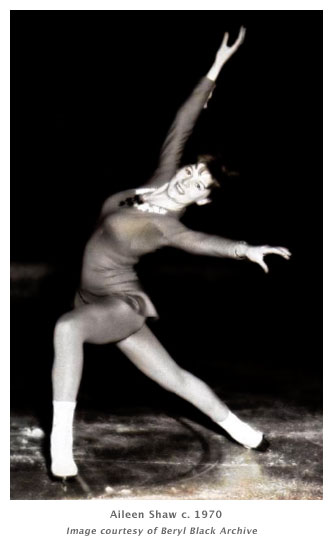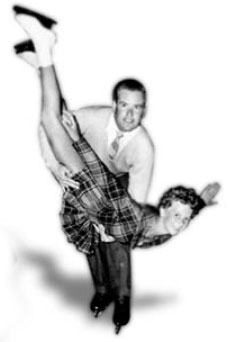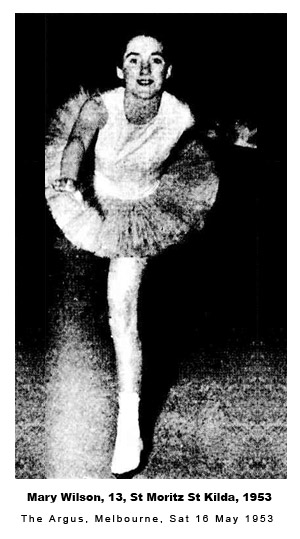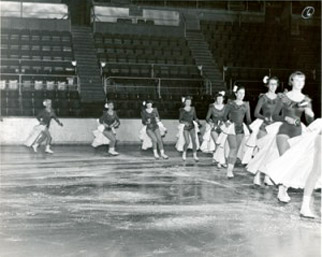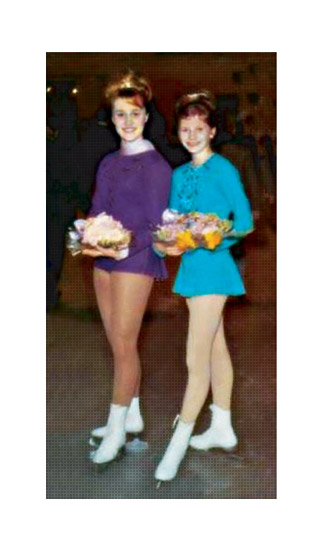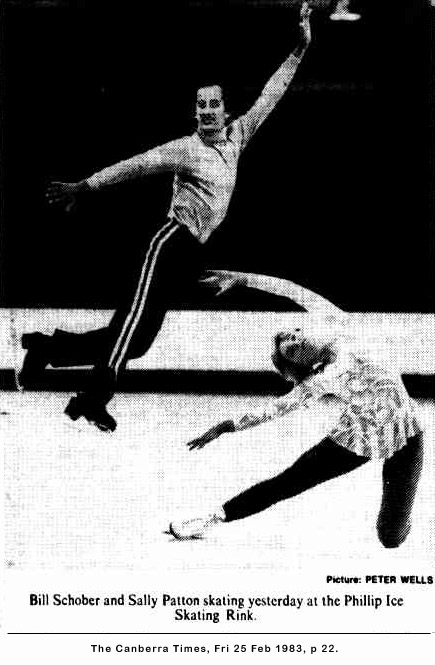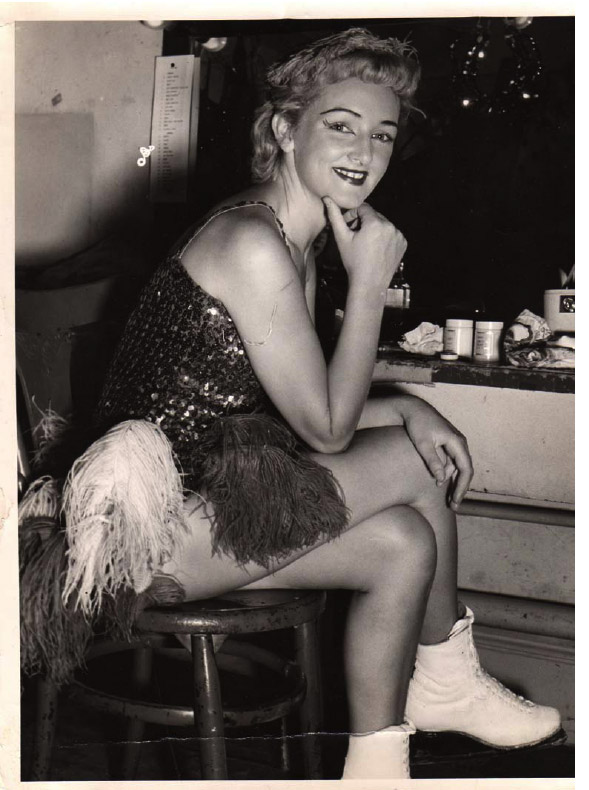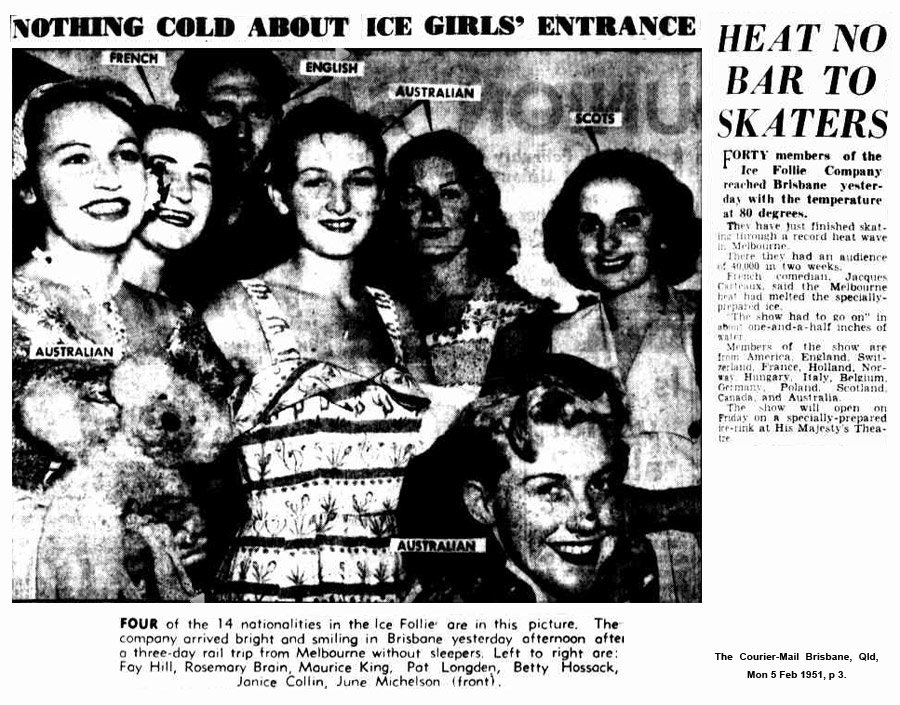Legends
home
1936 1st AUSTRALIAN Winter Olympian
1947 1st International Figure Skating GOLD Medallist
1960 1st Australian Olympic and World Championship ICE HOCKEY Teams Squaw Valley California USA
1961-2 2nd AUSTRALIAN Ice Hockey World Championship Ice Hockey Team Colorado USA
1963-4 2nd OLYMPIC Qualification ICE HOCKEY Team Tokyo Japan
1987 1st International Ice Hockey MEDAL Perth Australia
2008 Ice hockey World Championship PROMOTION TO DIVISION I Newcastle Australia
![]() I always think that the most extraordinary skating country however is Australia, where, as far back as 1904, a Mr. Newman-Reid built an ice rink at Adelaide. It worked under great difficulties, the refrigeration being piped from an ice works a quarter of a mile away. There, however, the long line of Australian skaters started, fifty years ago. With this Adelaide experience behind him, Mr. Newman-Reid went to Melbourne where he built the Glaciarium in 1905. it opened its first season in May, 1906, and has remained open ever since, despite all hazards, crises and world wars. Under such capable teachers as James Brewer and Claude Langley rapid progress was made; where these two learnt their skating it is difficult to say, but the world famous Miss Dent of Princes Skating Club known to my generation affectionately as Rock of Ages who went out each summer and taught there, once told me that she learnt to skate in the North of India where she lived as a child while her father served there in the British Army.
I always think that the most extraordinary skating country however is Australia, where, as far back as 1904, a Mr. Newman-Reid built an ice rink at Adelaide. It worked under great difficulties, the refrigeration being piped from an ice works a quarter of a mile away. There, however, the long line of Australian skaters started, fifty years ago. With this Adelaide experience behind him, Mr. Newman-Reid went to Melbourne where he built the Glaciarium in 1905. it opened its first season in May, 1906, and has remained open ever since, despite all hazards, crises and world wars. Under such capable teachers as James Brewer and Claude Langley rapid progress was made; where these two learnt their skating it is difficult to say, but the world famous Miss Dent of Princes Skating Club known to my generation affectionately as Rock of Ages who went out each summer and taught there, once told me that she learnt to skate in the North of India where she lived as a child while her father served there in the British Army.
In a short time Australia produced men good enough to compete in the World Championship. The late Dunbar Pool, who came back here after the First World War and managed several of the rinks both in London and in Scotland, was a very sound performer, as were Ramsay Salmon, the Reid boys and their sister Mireylees, as well as the well-known Miss Phyllis Hammond-Clegg (Billy Clegg to her intimates) whose waltzing was a joy for both partner and spectator in the years just before the First World War at Princes, where she attracted great attention and with whom we all wanted to dance. In 1907 the Sydney Glaciarium opened its doors. It was not until 1911, however, that a figure-skating association to govern the sport was formed, and this body promptly proceeded to hold championships for men and ladies, as well as for waltzing on ice. H. Newman-Reid won the mens, Miss Mireylees Reid the ladies and Miss Ryl Moore and Cyril F. MacGillicuddy won the waltzing. This, together with the formation of the Figure-Skating Club of New South Wales in 1912 by Charles MacLurcan, and the eventual amalgamation of both the Melbourne and Sydney bodies into a National Association, paved the way for the fine successes of Australian skaters of today. Ably led by Charles MacLurcan and Dr. Cyril MacGillicuddy, who started National tests on the lines of those of the N.S.A., Australians now rank as worthy contenders in International Competitions.
Such skaters as R. G. Park, who was second in the British Championship in 1949, Adrian Swan who won it in 1952, Patricia and Gweneth Molony of Melbourne and Dawn Hunter and the Sydney pair Jacqueline Mason and Mervyn Bower, who skated so well in the World Championship in Paris in 1952, and who stayed here and passed the Pair Gold test, bear witness to this. It is a most encouraging fact that from those countries where one would least expect skating or indeed any form of winter sport — South Africa, Australia and New Zealand — there should come the greatest enthusiasm for the idea of an Empire and Commonwealth Winter Sports Federation, a scheme which I began with an article in The Times and which is making great progress.
— Joan Dean, The History of Ice Skating, c.1956 [443]
British skater, non-playing captain of the 1936 British Olympic ladies team at Garmish, Editor of Ice and Roller Skate Magazine, England
The First Figure Skating Champions
1904 on
 ROM ITS INCEPTION IN LATE-1904, Australian figure skating was shaped by an English-born Australian, Professor John Charles Gerald Caldwell, "the Champion Roller Skater of Australia"; [354] and Professor James Brewer, a world-class professional ice skating instructor from Prince's Skating Club in London where the very first figure skating events of the Olympics were held in October 1908. Adelaide's Glaciarium Ice Palace, the first ice rink in Australia, was opened on September 6th 1904, and the first ice skaters on Australian soil were guests of the management. The general public attended the next morning. [322 ] Henry Newman Reid was the rink's first General Manager. [324] John Caldwell, the first professional skating instructor, was an associate of Frank Beyer, another champion roller skater and manager of the Jubilee Exhibition (Roller) Skating Rink on North Terrace in Adelaide in the years immediately before Adelaide Glaciarium opened. Five months earlier The Advertiser had reported:
ROM ITS INCEPTION IN LATE-1904, Australian figure skating was shaped by an English-born Australian, Professor John Charles Gerald Caldwell, "the Champion Roller Skater of Australia"; [354] and Professor James Brewer, a world-class professional ice skating instructor from Prince's Skating Club in London where the very first figure skating events of the Olympics were held in October 1908. Adelaide's Glaciarium Ice Palace, the first ice rink in Australia, was opened on September 6th 1904, and the first ice skaters on Australian soil were guests of the management. The general public attended the next morning. [322 ] Henry Newman Reid was the rink's first General Manager. [324] John Caldwell, the first professional skating instructor, was an associate of Frank Beyer, another champion roller skater and manager of the Jubilee Exhibition (Roller) Skating Rink on North Terrace in Adelaide in the years immediately before Adelaide Glaciarium opened. Five months earlier The Advertiser had reported:
ROLLER-SKATING IN ADELAIDE. Some years ago an enterprising Yankee made several thousand pounds by converting the Jubilee Exhibition for some months into an extensive roller-skating rink. A Perth resident has now arranged to lease the building for four months — May, June, July, and August — for a similar purpose, and intends to conduct operations on a large scale. Over 3,000 pairs of skates have been purchased, and expert roller-skaters of Melbourne will be engaged to act as instructors. [362]
The "Yankee" was A N Ridgely of San Francisco and this rink, along with a new boom in roller skating in Adelaide, Melbourne, Sydney, Perth and Brisbane, were the prelude to Australia's first ice rink. Beyer also owned and operated the roller rinks at St Kilda and Richmond in Melbourne (see Robert Jackson), and both these Victorian roller skaters had trained many of Australia's first ice skaters, long before there was even ice.
ICE SKATING RINK. The new Ice Skating Rink at the old Cyclorama was opened for business on Wednesday, a free night on Tuesday having inaugurated the season. There was a good attendance, the house being full in the evening. The floor is not in quite perfect order owing to the difficulty of keeping the expansion within assigned limits, but each day will see improvement. A large number of skaters, many of whom graduated in the Exhibition Rink, occupied the floor, while many others watched proceedings from the comfortable seats provided. The management have spared no expense in the arrangements, and ice skating bids fair to become as popular as roller skating. — Adelaide Advertiser newspaper. [356]
Australia's first International skating instructor was James Brewer, the "Professional Champion Ice Skater of the World" [351] from Prince's in London. [329] Brewer commenced a few month's after the official opening, at the start of the first full Adelaide season, early in March 1905: "The feature of the evening was an exhibition of fancy skating by Professor Brewer, who comes to Australia with excellent credentials. He proved that he is a skater whose equal has never been seen in Australia on an ice rink, and was loudly applauded for his dexterous and interesting exhibition, which reached a climax when he turned a complete somersault while going at full speed." [328]
Princes Sporting Club had opened Prince's rink eight years earlier on November 7th 1896, on Montpelier Square in the Knightsbridge district of London. This is not far from the site of the world's first engineered ice rink at Chelsea and, although Prince's Rink opened twenty years later, it was still among the earliest engineered ice rinks in the world (see Next Wave). Operating on a membership-only basis, it catered for the elite of British figure skaters who wished to practise on uncrowded ice. Ice skating was considered upper-class in Britain during these years, and London rinks prospered. Black tie and tails were worn and hats and long dresses for the ladies. Prince's was the second largest rectangular rink in Britain, and it set several firsts for both skating and ice hockey in Britain and Europe. It was host to the first four Olympic figure skating events ever contested at the 1908 Summer Olympics; the first time ever that a winter sport was introduced to the Olympic Games, sixteen years before the first Winter Olympics in Chamonix. The competition took place on October 28th and 29th, 1908. No event had more than seven competitors, with two having only three entrants. Irving Brokaw of the USA competed and was placed 6/9 (see Robert Jackson). Three Swedish skaters won the medals.
Prince's Ice Hockey Club, also founded in late-1896, was one of the most influential early European ice hockey teams, and it is sometimes considered the first ice hockey club in Britain. In 1908, they faced CPP Paris (Club de Patineurs de Paris) in the first match in Britain under Ligue Internationale de Hockey sur Glace (IIHF) rules. Aside from the English-born Canadian Herbert Blatchly, Australia's earliest connection with organised modern ice hockey on record was not Dunbar Poole, but Professor Brewer, a member of Prince's where organised British ice hockey had commenced. [322] Moreover, despite claims by writers such as Sidney Tange, [2] it was Brewer, not Poole, who was first to introduce world-standard figure skating and ice racing to Australia in a professional capacity. Poole was not an appointed skating instructor in Adelaide, nor in Melbourne during the start-up years, and he did not develop International-standard skating proficiency until years later.
Adelaide's ice was oval-shaped, 115 by 84 ft (35 by 25.6m), less a central bandstand area and maypole. It was a doughnut-shaped skating circuit and, as it neared completion in August 1904, Henry Reid compared it favourably with Prince's, and the famous Cercle des Patineurs rink in Paris, home ice to CPP Paris. [357, 358] It was certainly a similar shape — like an indoor frozen pond — but this was primarily because it was inexpensively installed in an existing circular building. The ice floor at 600 super feet (roughly 557 square metres) was larger than the Cercle which, along with Prince's, had clearly influenced Reid's idea for Adelaide. Adelaide Glaciarium was the first ice rink outside the northern hemisphere, and although the later Melbourne Glaciarium was a rectangular ice surface over three times its area, it was there in Adelaide, in April 1905, that he organised the first ice sports in Australia. His three sons, Andy, Hal and Leslie, were already proficient skaters, and among the winners of these very first events:
THE GLACIARIUM. The Glaciarium was well attended on Monday evening, when a programme of sports was carried out. There was a large attendance. A hoop race in three heats was run. The places in the first were filled by A L Reid and Pascoe, in the second by L Reid and J Anthony, and in the third by H Reid and H Knight. Two heats, were run in connection with the hurdle race, the first going to A L Reid and Illingworth, and the second to J Anthony and Bruer. ln the fan and balloon race Illingworth, Pascoe, J Anthony, H Nott, Conrad, and Bruer were left in to contest the final. The reel-winding competition was won by Miss Jarvis, with Miss Kennedy a close second. Miss Marsden and A L Reid won the button-sewing race from Miss Stuart and J Anthony. The finals will be decided tomorrow evening, when a mile handicap race for men will also be run. [330]
Three weeks later, a field hockey match was played on ice for the first time in Australia: "On Monday evening May 15th, "... an exciting hockey match was played at the Glaciarium between teams representing D & W Murray and G & R Wills. As most of the players were novices the game caused great amusement..." [331] G & R Wills & Co was an Adelaide boot factory and D & W Murray Limited were wholesale softgoods merchants, of Adelaide and London. This was a similar business to Robert Reid & Co incorporated in England, which was founded by Henry Reid's uncle, Robert. Soon, the staff of other companies were also competing, including James Marshall & Co of Rundle Street (1880–1928) and Goode Durrant & Co, both drapers and importers; [335] the department store Harris Scarfe & Co in Rundle Street; the farming equipment distributors, Clutterbuck Bros; and the Warehousemen's Association, of which Sir Edwin Thomas Smith (1830–1919) was patron. [335, 370] Today it is known as the Commercial Travellers' Association of Australia. Similar matches were also organised between some of Adelaide's schools including Prince Alfred and St Peter's colleges, the latter attended by the young Reids. [334]
By mid-1905, participants in these hockey matches were billed as "expert skaters" in the local press, because many had already become accomplished roller skaters before they had taken to the ice. These games were referred to as "Association hockey matches". The first "tournament" in 1905 was won by Harris Scarfe & Co. [371] The game they played was a form of bandy and field hockey, not modern ice hockey, and it was almost certainly similar to roller polo or roller hockey, which had been very popular in Australia since the 1880s, and which had been played by Professor Caldwell, in both Melbourne and Adelaide, before he became the first ice skating instructor in Australia. Quad roller skating, dancing and polo were as popular in Australia during these years as anywhere else in the world. World champions performed in Australia, including the Americans A N Ridgely, Harley Davidson and Robert Aginton (1859 – ), manager for James Plimpton's skating enterprises. It was Ridgely who set-up the Exhibition Rink in Adelaide from which many of the first ice skaters graduated, and Aginton returned to Australia permanently where he became a professional instructor residing in Melbourne (see Robert Jackson).
Claude Langley also played in these early matches in Adelaide, a few months prior to the opening of Melbourne Glaciarium, where he then became the first ice skating instructor with Professor Brewer. [361] Like most skaters of his era, Professor Brewer was also an accomplished speed skater who could skate six laps of the Adelaide rink (500m) in 1 min 2 sec. Half- and one-mile speed races had been common in Australian roller rinks for decades, and similar races were held on ice in Adelaide soon after the ice rink first opened. Some of the crew of the visiting Austrian cruiser Panther raced on Adelaide's ice, and races such as this in 1905 were among the earliest forerunners of organised speed skating in Australia (see Ice Racing). [335] By May 1907, when Brewer again exhibited in Adelaide, The Advertiser was able to report:
ICE-SKATING RINK. There was a record attendance at the Ice Skating Rink on Saturday evening, when Professor Brewer gave an exhibition of fancy skating. Professor Brewer has recently returned from Switzerland, where he won a medal, and his clever and graceful movements on Saturday were much appreciated by the large audience. A complete master of the art in all its branches, Professor Brewer is of course a long way ahead of any amateur performer, but visitors to the rink must be impressed by the wonderful progress made by many of the enthusiastic ice skaters who were first introduced to the ice in Adelaide. Some have attained such skill that they give in quite a casual way exhibitions of figure skating so fine that on a roller rink only the most accomplished professional could equal them. There could be no better proof of the immense superiority of the ice as a skating surface to any artificial substitute. The sport is growing in popularity, and deservedly so, since it is at once artistic and exhilarating. A good programme has been arranged for tonight, when members of the various Australian rowing clubs will be present. [366]
In the years preceding the opening of the Adelaide rink, Henry Newman Reid was General Manager of the Adelaide Ice and Cold Storage Company (AISCC). This company owned the Adelaide Ice Works in Light Square which had supplied Adelaide Glaciarium with its freezing capacity. Reid's role there made the difficult task of piping refrigerant to the rink both economic and practically feasible. He resigned from the position on May 15th 1906, "to take up an important engagement in Melbourne". [363, 365] Sir Colin Stewart, chairman of directors of AISCC, and William Booker were Reid's partners and joint proprietors of the Ice Palace Skating Company which owned and operated Adelaide Glaciarium. Reid severed his relationship with this company and his partners on November 19th 1906, soon after he assumed the General Manager's responsibilities of the newly opened Glaciarium in Melbourne. [346] Brewer and Caldwell continued at Adelaide Glaciarium until it closed at the end of a shortened season in the Winter of 1907. [348 ] Patronage had declined after Reid's departure, and the rink was converted to the Olympia Roller Rink late that year; an asphalt floor operated by Horace Turner, manager of the South Yarra Roller Skating Rink in Melbourne, which was also important in the formative years of Australian ice skating. [352] Professor Brewer transferred to Melbourne Glaciarium when it opened in June 1906. Claude Langley returned home to Melbourne, where he too became an instructor. [359 ] John Caldwell remained and resumed roller skating exhibitions and instruction at the Academy of Music in Kensington Terrace, Norwood in Adelaide, from June 29th, 1909, when a roller rink was opened there. [360] The AISCC was taken over by the South Australian government in 1910, and renamed Metropolitan Ice Works.
And so it was, the first forerunners of Australian figure skating, ice racing and ice hockey were established in Adelaide between March and April 1905, under the direction of an Australian champion roller skater, and a world-class ice skating instructor from London. Australia's first rink had operated successfully for the best part of three full seasons, although Reid had returned home in late-April 1906, and others soon followed. [343] This was about six weeks before Melbourne Glaciarium opened and with it, the Academy of Skating, the first school for elite figure skating instruction in the southern hemisphere, led by Brewer and Langley. Like Brewer, Miss Dent was also from Princes Skating Club and she often exhibited with Langley. She was a professional instructor initially in Melbourne and then Sydney for several seasons between 1908 and 1910. Over the next few decades, this academy on the banks of the Yarra River trained literally thousands of skaters, from novice to elite, and then launched Australia onto the International winter sports stage.
![]() Adelaide Roller Ball Poster signed by A N Ridgely, Columbia Elite Roller Skating Rink | 1888 |
Adelaide Roller Ball Poster signed by A N Ridgely, Columbia Elite Roller Skating Rink | 1888 |
Reid interview The Advertiser, Adelaide | 1904 | Comparative ice pads | 1904–7 |
Adelaide Glaciarium Carnival (Dunbar Poole and Mirey Reid) | 1905 |
Notes:
[1] According to Reid, the Adelaide ice pad was an oval 115 by 84 ft (35 by 25.6m), 600 superficial feet in area in a circular voulme 47ft (14.3m) high. [357] "Superficial" in this use meant "square": a superficial foot, for example, is equal to a square foot, and a superficial yard is equal to a square yard. In Australia and New Zealand, it was also used to mean the same as the board-foot; a specialized unit of volume for measuring lumber in the United States and Canada (the volume of a one foot length of a board one foot wide and one inch thick). However, neither measure adds-up because the rink was larger than 600 square foot (56 square metres) since its dimensions were 35 by 25.6m. A typical oval with those dimensions has an area of around 700 square metres. To add further confusion, other records show the rink area was 8,000 super feet with a central pole supporting the roof and an ochestra in the middle. This is closer at 743 sqm, but it referred to the total area including the central orchestra and seating. The central pole was used as a maypole, so patrons were probably able to skate around the orchestra and seating, holding onto the pole's straps. The resultant actual ice surface area was more likely 60 squares, or 6,000 square foot (554 square metres), something like the diagram at the link "Comparative Ice Pads" above. Also see Henry Newman Reid in Adelaide.
[2] The spectacular Exhibition Building on North Terrace was built to accommodate the Adelaide Jubilee Exhibition in celebration of the colony of South Australia's fiftieth birthday in 1887. The exhibition ran from June 1887 to June 1888. The grandeur of the building was a symbol of the colony's progress and was in a formal classical style, with an imposing dome. The building had various uses before its demolition in 1962 to make way for the Napier building and adjacent car park and plaza at the University of Adelaide. The sport of competition roller skating, also popular in the 1950s, has experienced yet another resurgence in Australia and is said to be the fastest growing sport in the world. The World Speed Roller Skating Championships were held in Adelaide from 3-6 September 1986. Adelaide hosted Melbourne in the inaugural Skate of Origin, Australia's first interstate all-girl roller derby bout, at Jubilee Pavilion in the Wayville Showground on 24 February 2008. The Adelaide Roller Derby league has a program of events for 2009.
Albert Phillip ENDERS + Sadie CAMBRIDGE
Albert (1898 - 1976) Sadie (1899 - 1968 )
ALBERT PHILLIP ENDERS WAS BORN in 1898 at North Fitzroy in Melbourne's inner city, to parents Bernard Enders (d. 1920) and Maria Josine James. His two sisters who survived infancy were Irene May, born in 1894 at North Fitzroy, and Ruby Kathleen born in 1896 at Collingwood. The family home was at 59 Keele St, Collingwood. Enders' father died in Melbourne in 1920. [106] Sadie Cambridge was born Sarah Elizabeth MacCambridge on March 25th 1899 at 60 Garden Street, Alexandria, an inner suburb of Sydney, Australia. [420, 421, 422] She was the only child of James MacCambridge (d. 1926), a railway labourer from Glasgow, Scotland, and Elizabeth Lyons (1877 – 1949) of Sydney. In 1923, at the Melbourne Academy of Skating, Professor Enders and Sadie Cambridge gave skating exhibitions with John Goodall, Jack Gordon and Lena Uksila, a professional instructor from New York's Hippodrome (see Robert Jackson). In September that year, they gave an Exhibition at the "Carnival of 3,000 Lights" in Melbourne, again with Uksila and her partner, and "a number prominent Sydney skaters" who visited specially for the occasion. [146, 147] In May 1924, they were billed as "Australia's Most Graceful Skaters" in an "entirely new exhibition" at Melbourne Glaciarium. At the end of season carnival in late September of that year, The Argus reported:
With ineffable grace and admirable skill a flight of golden and silver white butter flies darted and swooped, swerved and pirouetted on the ice at the Glaciarium last night, in the ballet produced by Mr A Enders and Miss Sadie Cambridge, in the course of which these two artists gave an exhibition which expressed the poetry of motion as only the expert skater can interpret it. Those who took part in the ballet, including the two professionals, were four young girls, Corona Shepherd, Joy Taylor, Leslie Davis, and Ivy Holmes, Mrs Rogerson, Miss Stella Braithwaite, Mrs Mullett, Miss Dina Callaway, and Mrs Simon Fraser and Miss Hilda Grice. The performances of the two first-named girls, who opened the ballet, and of Mrs Fraser and Miss Grice, were especially beautiful. Intricate figures and movements were accomplished with consummate ease, and the whole thing was a delight to watch. Later in the evening an exhibition of ten-stepping and waltzing was given by Miss Cambridge and Mr Enders, which further demonstrated their mastery of the art. [203]
Mrs Simon Fraser was Phyllis Clegg, daughter of Mary Ann Ellen Goodall (Clegg), an aunt of John Goodall. Hilda Grice was the daughter of Sir John Grice, an important patron of Australian ice sports during the foundation years. In 1925 in Melbourne, Enders and Cambridge exhibited fancy and acrobatic skating, including the "Swiss Death Swing", while Cyril MacGillicuddy demonstrated free and figure skating. The Swiss men's figure skating champion, Henry (Hans) Witte, was also an instructor at the Melbourne academy this year. Over 4,000 people attended the opening of the ice skating season in May, while about 1,000 skaters "skimmed over the ice under a brilliant canopy of amber lights". [143] The couple were also instructors at Sydney Glaciarium.
Like others in the earliest years of Australian ice, these pair skating champions became ex-patriots, traveling to wherever they thought they could farther their skating. They made London their base for many years and were married at St George's, Hanover Square, London in June 1931. Cambridge was interviewed by The Argus newspaper when the couple returned to Melbourne in 1933:
Miss Sadie Cambridge, who, with her partner Mr Albert Enders is on her way to Sydney when seen yesterday morning on board the R.M.S. Coriu, spoke with enthusiasm of the recent development of the ice ballet and ice dancing in Europe. Both Miss Cambridge and Mr Enders are world's champions, and are among the mere handful of people who hold the gold medal for skating. "It takes three to four months to learn to get round," she said, "from four to five years to become a good skater, and then one has the rest of one's active life to develop the art of skating, which is as great an art as drawing or any of the allied arts".
"Australia had rinks 25 years ago and England began to follow a few years back," Miss Cambridge continued, "but today there are seven or eight rinks in London alone, although the first English centre was Manchester where Mr Enders and I have done much display work. Among our pupils in London have been Lady Louis Mountbatten, Lord Dunmore, and the Birkenhead family, and they have set a fashion which has grown immensely owing to the really beautiful ice ballets put on in the theatres. Mr Enders, my partner, arranged the ice ballet for 'Wild Violets'. The only difference between it and a dance ballet is that the ice skater holds the knee loose. The dancers all wore skates, but the composition 'ice' was the domestic soda. Our last ballet was 'Madame Pompadour' at the Grosvenor, where the Prince of Wales, who is an enthusiastic follower of skating, was present." Miss Cambridge says that for morning skating black velvet outfits are largely favoured and for afternoon wear bright colours, especially red, green or lemon. She considers that ice hockey could be played more than it is here. With Mr Enders she played at the "Palais de Sport," Paris where l5,000 people were interested spectators, and she considers that Australian ice hockey teams, the members of which had learnt to play together, could beat any English team and attend the Canadians. [381]
Enders and Cambridge returned to Melbourne and Sydney numerous times during the 1930s. In May 1934, The Argus reported: Ice Skating Abroad. Mr and Mrs Albert Enders, who are bound for Sydney, won the world's championship for pair ice-skating recently. "Skating is becoming more difficult every year," Mr Enders said. "The recent improvement in the loops, counters and brackets which have been developed from the classic figure of eight requires a greater degree of accuracy. London has become very keen on ice-skating, and cocktail parties at one of the rinks are a popular way of entertaining. Plain black velvet is the favourite wear for indoor skating and touches of white are now being used instead of fur as trimming." [382]
On May 25th, 1935 the pair gave a gala performance at Sydney Glaciarium (pictured top right). Fox Movietone News filmed them at the Glaciarium and released the footage on a 16mm newsreel in August that year. At the time, Enders taught and produced ice ballets at the Queen's Skating Club (possibly Queen's Ice Club, in Bayswater, London which had opened in 1930 on the site of today's Queens Ice Dance Club). They returned from London for 5 weeks due to the illness of Cambridge's mother, Elizabeth, then later exhibited at the Empire Exhibition Rink in Johannesberg, South Africa which opened with the Exhibition in September 1936. They were accompanied by their 11 year-old pupil, Daphne Walker, who became British Ladies Champion in 1947. [404] They performed at Melbourne Glaciarium in July the following year, as reported in The Argus: World Champions at Glaciarium. Nearly 3,000 people attended the Glaciarium last night when four national champions appeared on the ice. They were Miss Sadie Cambridge and Mr Albert Enders professional pair skating champions of the world for the last five years; Miss Joyce Macbeth, for three years woman professional champion of Great Britain and Miss Daphne Walker a gold medallist of Great Britain who, although aged only 11 years, was fourth in the open championship of Great Britain this year, and Mr Nate Walley. In an exhibition flawless in technique Miss Walker skated the eleven-mlnute programme she provided for the British championship. Mr Walley, who was professional champion of the world in 1934-1935 gave an exhibition of skating and dancing on the ice to music. Miss Macbeth skated about the rink at a terrific speed carrying two flaming torches. Miss Cambridge, Miss Walker and Mr Enders will give an exhibition on Saturday evening and will leave for South Africa on Tuesday. [383] Their pupil Daphne Walker became the 1939 World women's figure skating bronze medalist and 1947 silver medalist, and the 1939 and 1947 European bronze medalist. British Pathe hold film footage of Walker at Wembley and Davros. Joyce Macbeth first toured Australia in 1934. She remained and married Australian figure skating champion, Frank Mercovich.
Between 1932–8, Enders and Cambridge had become NSA Gold Medalists and husband-and-wife World Professional British Pair Skating Champions no less than seven times. In January 1936, they again performed at the famed Palais De Sport in Paris owned by Jeff Dickson (1896–1943). In June that year they returned to Sydney Glaciarium with 11 year-old Daphne Walker. [349] In 1936–7, working daily from early morning until after midnight, they managed, taught, performed and eventually turned South Africa's Empire Exhibition ice rink in Johannesburg from "a hopeless proposition ... into an unqualified success both financially and socially." They then returned to England where their students at the Queen's Arena, London included Pamela Davis MBE (1921 – 2011) and Mollie Phillips (1907 – 1994), both of whom later became International Skating Union (ISU) Judges. In 1938, the couple performed in Tom Arnold's "Switzerland Musical Extravaganza on Ice" at the Liverpool Empire. The cast included Eddie Marcel, Betty Somerville, Elsie Derksen, Rudie Angola, Iris Goater, Maurice Barlow, Hope Braine, Melitta Brunner, Barbara Matthews, Harry Torrani, Barr and Estes, Kendall Capps, Arren and Broderick, Bruce Mapes and Hazel Dawn, Diana Grafton, and the Lindstrom Brothers. The show was staged in Australia the following year with British champions Phil Taylor and daughter Megan Taylor. Also in 1938, Enders and Cambridge invited Ken Kennedy, Australia's first winter olympian, to join their traveling troupe. So it was he turned professional. [430]
The Australian couple finally settled in Canada in 1940 where their Montréal Winter Club students included Dwight and Libby Parkenson and Norman Gregory. Montréal Winter Club at 1475 Drummond St was the most prestigious private sports club in Montréal at the time. Based at Victoria Skating Rink, it had hosted the first-ever recorded organized indoor ice hockey match on March 3, 1875. Melbourne professional skater Gwen Chambers worked two seasons at the Winter Club from October in 1937 and 1938, while her brother Ron worked at the Granite Club, Toronto. They returned to teach at Sydney Glaciarium in the European off-season. (Argus: 1 Mar 1938 p 18; May 6 1939 p 41). The Victoria Skating Rink was commandeered by the Royal Navy in 1939 with World War II looming. At war’s end six years later, it was decided it would not reopen. Its famous 1870 painting "Carnival" by William Notman, a festive skating scene from the Winter Carnival held each year at the Winter Club, was donated to the Montréal Badminton & Squash Club (MB&SC), where it still hangs today on the main stairway leading up to the second floor (image opposite).
At the Garden City Arena and the Toronto Skating Club Enders and Cambridge coached Suzanne Morrow (1930–2006), Wallace Diestelmeyer (1926–1999), Frances Dafoe CM O.Ont (1929– ), Norris Bowden MBA (1926–1991; image left), Ann Aubin, Elizabeth and Barbara Gratton. Their Toronto rink was Icelandia, a privately-owned rink at 1914 Yonge Street, where they were regarded as "the world's most famous skaters and teachers". At the Connaught Skating Club, Vancouver, founded in 1911, they coached Suzanne Morrow and Wallace Diestelmeyer between 1946–8 (image left); Junior Ladies and Junior Men's Champions (1946); Senior Pair Champions (1947–8); and Senior Dance Champions (1948). They coached the 1st Junior Pairs, Pearl Simmers and David Spalding (1948), Audrey (Downie) Williams and Brian Power (1951), and Pat Spray and Norman Walker (1952). Williams and Power finished second in Canada in pairs in 1952 and 1954. Williams gave over five decades to the sport, a long-time Olympic and international judge inducted into the BC Sports Hall of Fame in 2011. Students of Enders and Cambridge won most of the Pairs and Fours in Western Canadian Championships as well as many Dance Championships.
Enders and Cambridge had performed exhibitions at London's Wembley Stadium and, early in 1947, they arranged with its managing director, Sir Arthur Elvin, a similar engagement for their Toronto Pairs students, Suzanne Morrow and Wallace Diestelmeyer (image left). This couple developed the current one-handed version of the death spiral in the 1940's, first invented by Charlotte Oelschlagel in the early-1900s (see Robert Jackson). They won Canada's first ever winter Olympic medal the next year; bronze in 1948 at St Moritz, Switzerland. That continued eight years later in Cortina d'Ampezzo, Italy where two more of their Toronto Pairs, Frances Dafoe and Norris Bowden (image left), won the silver medal. Both couples also produced World Championship titles in pairs skating: Morrow-Diestelmeyer won Silver (1948, Davos) and Dafoe-Bowden won Silver (1953 Davos); Gold (1954, Oslo and 1955, Vienna); and Silver (1956, Garmisch). Both couples were inducted in the Skate Canada Hall of Fame. Morrow-Diestelmeyer are credited as being the first pair to perform the death spiral. Morrow also competed as a singles skater in the 1948 and 1952 Winter Olympics and served as a figure skating judge for over fifty years. At the 1988 Winter Olympics in Calgary, she took the Judge's Oath, the first woman to do so at the Winter Olympics. Dafoe-Bowden were the first pair skaters to do the twist lift, throw jump, ‘leap of faith’ and overhead lasso. It was because of these two that some of the rules in pairs skating were changed. Bowden has since been inducted into Canada's Sports Hall of Fame (1955), the Canadian Olympic Hall of Fame (1958), and the Skate Canada Hall of Fame (1993).
Between 1947 and 1960, Enders and Cambridge presented ice shows all over British Columbia with skaters such as Linda Brauckmann, Brian Power, Pamela Wellman, Canadian pairs medalists Pearle Simmers and David Spalding, Joan (Penfold) Glynn, Margie (Penfold) Sandirson, Ann Doherty, Canadian dance champion Fran Gunn, and Dorothy McLeod. Sadie Cambridge died at age 69 on 1st September 1968 at Vancouver in Canada. [420, 423, 424] Albert died in 1976 a short distance south in Seattle, USA. Albert and Sadie won the Open Professional Championship of Great Britain seven times from 1932 through 1937, and trained some of the top young skaters of their time in England then Canada. The couple have an entry in the Historical Dictionary of Figure Skating By James R Hines and are nominated to be inducted to the Skate Canada Hall of Fame.
![]() Historic letters and newsprint: | 1924 | 1933 | 1935 | 1936 | 2 | 1937 | 1938 | 1940s | 1947 |
Historic letters and newsprint: | 1924 | 1933 | 1935 | 1936 | 2 | 1937 | 1938 | 1940s | 1947 |
 Enders + Cambridge: [1] The Skater, rel 4 Dec 1930 [2] , Skill On Skates, Ice Club London, rel 1948.
Enders + Cambridge: [1] The Skater, rel 4 Dec 1930 [2] , Skill On Skates, Ice Club London, rel 1948.
Historical notes:
[1] The missing family history details for Sadie were provided by relatives, Sharron Ibbotson and Dennis Lyons. For some time it was thought Sadie was born in Sydney, Australia, but there were no civil registration records under the name Sarah Cambridge. Her MacCambridge civil records are now in the Citations [404, 420, 421, 422, 423, 424]
[2] THE EMPIRE EXHIBITION SOUTH AFRICA JOHANNESBURG, Sep 1936 – Jan 1937. Extract from a pamphlet distributed by the Government Travel Bureau, South Africa House, Trafalgar Square, London, W.C.2: "There will be a large Ice Skating Rink, on a perfect sheet of frozen water, a quarter of an acre in extent. It is hoped to secure the services of many famous skaters from overseas to give exhibitions on the Rink. A magnificent ballroom dancing floor is being laid down, which will provide a pleasure resort of a kind not seen before in South Africa. It will not be a palais-de-dance, but new ideas and effects are being considered by experts from London, Paris, and New York, as well as by the dancing profession of the Union itself. The musical arrangements for the theatres, and restaurants, skating rink and ballroom are in the hands of a well known impresario, who is searching Europe for the finest personnel available."
[3] The private management of Icelandia rink at Yonge Street in Toronto in the 1940s were more infamous than famous, drawing a good deal of publicity for racial discrimination. As a result of the rink refusing a ticket to Harry Gairey Jr, Toronto City Council eventually passed an ordinance against discrimination based on race, creed, colour or religion. Gairey Sr went on to become one of the most prominent activists of his generation, a lifelong promoter of black rights. He died at 98 in 1993. [369] Since 1943, Yonge Street in Toronto has been the home of the Hockey Hall of Fame.
[4] WPA Film Library hold 1933 footage shot in London of cast members of Drury Lane's 'Wild Violets' (choregraphed by Albert Enders) skating about a frozen lake in jazzy outfits. Tape Master: 7272, Clip No: 49234-1, Original Film: PT 152, Description: Brighter Skating - Too long we in England have been content to take our skating (if any) too drably - L/S and M/S of people skating around on a frozen lake in winter. "When the next skating spell comes let's take a tip from these boys and girls in Drury Lane's 'Wild Violets' and put a bit of brightness into things - like these costumes -". Various shots of the cast of 'Wild Violets' putting on their skates and skating across a frozen lake / outdoor ice rink in jazzy skating outfits. Some of the girls wear fur-trimmed ice-skating skirts; the men wear knickerbocker-type trousers. One couple dance around on the ice together to some tinny music coming from a wind-up gramophone; the others watch and cheer.
SIR ARTHUR ELVIN MBE (1899 – 1957) His name is forever associated with London's Wembley Stadium where Australians such as Enders and Cambridge, Pat Gregory and Reg Park, starred in ice shows and pantomimes. His letter (link above) to Enders and Cambridge in 1947 confirmed the first Wembley engagement of their students Suzanne Morrow and Wallace Diestelmeyer. Born July 5th, 1899 in Norwich, Arthur Elvin left school aged fourteen years, and tried numerous jobs before joining the Royal Flying Corps during WW1. He was later shot down over France and spent two years as a prisoner of war. His association with Wembley started in 1924, working as an assistant in a tobacco kiosk at the British Empire Exhibition. After its closure, he made his fortune by buying up and clearing out the derelict pavilions one by one, and selling off the scrap materials. When the stadium went into liquidation, Elvin quickly raised sufficient backing to buy up the complex, becoming managing director of Wembley Stadiums Ltd in 1927. His next move was to persuade the board to build a multi-purpose indoors sports arena to complement the main stadium. The result was the Empire Pool and Sports Arena, later known simply as Wembley Arena, which opened its doors in 1934. Having promoted new sports such as greyhound racing and speedway in the stadium, Elvin introduced ice hockey to a wider British public.
Canadians were recruited in large numbers to go to Britain and within a couple of years, two further large arenas were constructed in the London area, at Harringay and Earls Court, and all three were capable of seating eight thousand spectators. Wembley iced two teams, Canadians (later Monarchs) and Lions, and fans flocked to see the 'new' sport superbly presented in comfortable surroundings, and complemented by an informative programme unequalled by any other sport at the time. Australians Jim Brown and Ken Kennedy were among the first ice hockey players in these new arenas and some of Australia's champion figure skaters, such as Pat Gregory and Reg Park, followed a decade or so later. There were more boom years immediately after WW2, but the advent of long-running ice shows over the Christmas and New Year period made the continuation of two teams impractical and in 1950, the Monarchs folded. The Lions remained members of the English (later British) League until 1960, when the importation of large numbers of Canadian players was no longer economically viable, causing the virtual collapse of organised hockey in the south of the country.
Elvin had died three years earlier while on a cruise to South Africa. British hockey historian, Martin C Harris, has noted Elvin's death meant we would never know whether he would have been able to do anything to ensure continuation of ice hockey at his beloved Wembley. He would, however, have been proud Wembley Arena came to be regarded as the spiritual home of ice hockey in Britain. Wembley was used for the showpiece finals weekend, albeit once a year, until the dawn of the Superleague era in the late-1990s. Arthur Elvin was made a Member of the British Empire in 1945, and received his knighthood from King George VI in 1947. He died at sea on February 4th, 1957. Inducted into the Ice Hockey Journalist UK Hall of Fame in 1990. [447]
JEFF DICKSON (1896 – 1943) He was born Jefferson Davis Dickson Jr, in Natchez, Mississippi, but he made a name for himself in the boxing world outside of the United States. After serving in World War I as a photographer, Dickson remained in France and in 1924 he began promoting fights. He eventually became the owner of the famed Palais De Sport in Paris, which hosted numerous title fights. He promoted in large cities all over Europe, including London, Berlin, Brussels, Rome and Barcelona. Dickson had an ability for nurturing fighters from early in their careers until they became champions. He is credited with building heavyweight champion Primo Carnera and also promoted Hall of Famers Young Stribling and Len Harvey. He promoted the Carnera-Paulino Uzcudun fight in Barcelona in 1930. Dickson also promoted other sporting events, including figure skating, bike races, hockey, bullfighting and wrestling. A copy of his 1936 letter of engagement to Enders and Cambridge is attached to the link above. In 1943, Captain Jeff Dickson was reported lost in action over Germany while serving in the US Air Force during World War II. He was inducted into the International Boxing Hall of Fame in 2000.
Rona THAELL + John CARUANA
Rona (1912 - 2012)
SHE WAS BORN VERONA THAELL on the 29th June 1912 in Manchester, England and arrived in Australia permanently in 1948. Her husband, John Caruana, was hired to manage the Sydney Glaciarium following the retirement of Reg Leafe in 1948. [42] However, before the war, she and her brother Cliff had also previously worked three exhibition seasons under contract to Sydney Glaciarium in 1936, 1937 and 1938. [429] Thaell learned to skate at Manchester Ice Palace (1910-1960s) when that city was the ice capital of the world. [449] Caruana was General Manager of Sports Stadium Brighton, England, (1935 – 1964). It was home ice to the ENLs Brighton Tigers IHC for 30 years, over which time it gained a reputation as one of the biggest sporting and entertainment venues in England. [36] He was also associated with Earl’s Court, aka the Empress Hall, a major ice rink and entertainment arena in London with a capacity of 7,000 that closed in 1957. Dunbar Poole was managing Streatham Ice Arena and its ice hockey team by 1932, while he was still associated with Sydney Glaciarium. Jimmy Brown, Pam Prior, Pat Gregory, Enders and Cambridge, Ken Kennedy, Bud McEachern and St Moritz rink coach, Frank Chase, were first among many Australians to skate professionally at these English Ice Hockey Circuit rinks during their Poole and Caruana years.
Thaell was appointed head of professional instructional staff at Sydney Glaciarium and the couple remained there until the rink closed in 1955. She had starred with Sonja Henie (1912–1969) in the first Ice Revue in 1938 at Madison Square Garden. Henie "retired" from amateur competition in 1936, after winning her third gold medal, and began a career as an actress. She started exhibition skating at the same time, building her own business around ice revues that toured the country. Thael and brother Cliff were in the very first and very famous Ice Capades cast in 1940-1 (image below), with Belita and Czech figure skater and actress Vera Ralston (Hruba). The first touring season covered twenty-four cities between November, 1940 and May, 1941. The skating director was former American hockey player, Charles Uksila, and his wife, Vida, was the wardrobe mistress. Uksila and his sister, Lena Uksila, had been contracted as professional instructors at Melbourne Glaciarium in 1920 and 1923, and Charles was coach of the Victorian ice hockey team in 1923. Rona skated in Ice Follies with Pam Prior in 1940. Rona and Cliff performed in the original Broadway production of Henie and Wirtz's It Happens on Ice (Oct 1940 - Jun 1941) and the return engagement, both at the Center Theatre on Broadway, NY (Jul 1941 - Apr 1942). It was performed 276 times and a further 386 times from its return during 1941-2. Cliff continued with Henie's next show Stars On Ice. Rona toured with the 'All Star European Ice Revue' presented by Arthur Wirtz (also see Pam Prior); ice-danced with her brother Cliff; and taught skating all over Europe. Cliff became a highly respected coach at the Skating Club of Lake Placid where the legendary Gus Lussi also coached. [436]
Soon after the Glaciarium closed in 1955, Caruana managed Australia's only outdoor rink, Prince Alfred Park (1959– ), which opened in Sydney on June 2nd, 1959. It was in Chalmers Street, Surrey Hills; close to the Central Railway Station and the former Glaciarium. The Glaci on Broadway had long been a favourite place to socialise and without it there was nowhere to skate in the city. Public pressure had been sufficient to cause Sydney Council to redesign its plans for Prince Alfred Park pool to include a rink. The complex was built on the former site of the Exhibition Building, and the rink was the first in Australia to operate a Zamboni ice resurfacing machine. Prior to then, snow was cleared with a tractor and plough, sweeping by a team of boys and finally watering with a hose. It continued that way at other Australian rinks for many years. Ice hockey had lapsed in NSW for some years after the Glaciarium closed. Caruana was eventually compelled to ask Syd Tange to take charge of a special coaching class as a gesture from the rink management to help re-establish it. The first series was played in 1969 at the Canterbury Ice Rink and the second at Prince Alfred Park. Canterbury in Sydney's inner west was also built open air in 1966, then covered in 1968. It still operates as the not-for-profit Ice Skating Club of NSW Co-operative Ltd, which returns its income to rink operations. The Prince Alfred Park rink was demolished in 1993, and the area it occupied was absorbed into the pool enclosure.
Rona Thaell produced many Australian Champions both in Figures and Free Skating and also excelled at ice dancing. She retired to the Gold Coast, and still drove her car and went to aqua aerobics three times a week, well into her nineties. She turned 100 on June 29th, 2012 and passed away soon after.
![]() Sydney| 1936 | 1938 | Caruana | 1938 | Ad. | 1938 | Ice Capades | 1940 | 1943 | Sydney again | 1949 |
Sydney| 1936 | 1938 | Caruana | 1938 | Ad. | 1938 | Ice Capades | 1940 | 1943 | Sydney again | 1949 |
All Star European Ice Revue | 1940 | 2 | 3 | 4 |
Pamela Irene PRIOR (- SCHUHAM)
(1918 - 2008 )
BORN IN BOSCOMBE, BOURNEMOUTH, ENGLAND on 11th June 1918 to Australian parents, she was a Melbourne girl, the daughter of Captain Alfred Stanley Prior LDS BD of the 2nd Australian Auxillary Hospital based at Southall London, and Gladys May Fletcher of Bournemouth, England, who married at St John's Moordown during the war. [435, 438] Her father was a dentist with pratices in Collins Street Melbourne and the suburb of Camberwell. He was the son of Alfred Frederick Prior (1862 – 1909) [438] and Annie Elizabeth Hollis (1864 – 1943), licensees of the Globe Hotel in Mount Gambier, South Australia for 21 years. Annie moved to St Kilda around 1920, residing there until her death in 1943. [437]
Prior was still a new-born when the family returned home to Camberwell after the war. She first learned to skate at Melbourne Glaciarium, often practising as many as 10 hours a day. She was very fond of skating and had decided to become a champion from an early age. Then in the early 1930s, when she was in her early teens, she moved to London with her family, the centre of the skating universe at that time. She competed for Britain in the 1936 World Championships (9th/17) and the European Championships (12th/17), placing higher there than the Czech skater and actress, Vera Ralston (Hruba). Ralston was the lead skater of the very first Ice Capades of 1940 in which Rona Thaell also skated. Prior's repertoire was soon to include many highly technical and dangerous stunts. The London press once reported her legs were insured for £10,000. In 2008, the Chicago Tribune noted she had also skated for Great Britain in the 1936 Olympics, and so too did the Australian press of the time. Prior was selected as a reserve in the women's skating team which represented Britain and trained at the Ice Club at Millbank in London. Her teammate, Cecilia Coolidge, won silver in the women's event. [563]
In 1937, Prior earned the NISA skating medals in record time, and won the world's professional ice skating championship in London, [431] still only 19 years-old. Australian-born British theatre manager, Sir Oswald Stoll, offered her a contract in his spectacular St Moritz ice revue at the Coliseum Theatre in London in 1938, where her contribution was regarded as one of the most thrilling in the production. She then joined Arthur Wirtz's All Star European Ice Revue and traveled to Chicago [450] skating at the Chicago Stadium. She was one of four headliners with Audrey Peppe (New York), Armand Perren's skating partner Henny Egli ( St Moritz, Switzerland), and Edwina Blades (Johannesberg, South Africa) who married Cliff Thaell. Prior was married in the USA to Kenneth Schuham (1906 – 1993) of Michigan on 29 June 1939. They started a family in Oak Park, Illinois. [433] Schuham had founded Schuham Hardware in Chicago, which is now operated by their children. [434]
In 1939–40, Prior performed in Ice Follies with Cliff and Rona Thaell. In 1940, she was the star of Sun Valley Winter Wonderland ice revue in New York, billed as "Pamela Prior of London, England, world's professional skating champion", and crowned "Queen of the Ice". The revue was piloted by Alman R Shaffer Jr (1889-1942) for the second season of the 1939-40 New York World's Fair. The winter village was constructed and exhibited at the site of the Fair in Flushing Meadows, New York, with only the show's title connecting it to the Idaho winter sports resort. Prior also performed in the TIMES Ice Carnival in March 1944. Pam Schuham died at the age of 90 at Oak Park, Ill. on 17 March 2008, survived by her three children, Stanley, Sara Ann Barilla and Richard; a grandmother of 8 and great-grandmother of 11.
![]() Winter Wonderland NY | 1939 | 1940 | 2 | 3 | 4 | 5 | TIMES Ice Carnival | 1944 |
Winter Wonderland NY | 1939 | 1940 | 2 | 3 | 4 | 5 | TIMES Ice Carnival | 1944 |
All Star European Ice Revue | 1940 | 2 | 3 | 4 |
Dr Cyril Florance MACGILLICUDDY
(1889 - 1947)
SPORTS BIOGRAPHY IN HOCKEY CHAMPIONS. Born August 10th, 1889, son of Daniel Florance MacGillicuddy (abt 1843–1902) and Mary Anne Meaney (1845–1898) of 'The Reeks', 11 Hoddle Street, Richmond, Victoria, Australia. [90] The family home was near Victoria Parade and North Richmond railway station, not far from the residence Robert Reid purchased for his mother in 1864 (see Henry Newman Reid). In 1910, MacGillicuddy played on the first Victorian ice hockey team to compete in Sydney, captained by Robert Jackson with Andy Reid, John Goodall, Woods, Blair and Walker. Victoria retained the Interstate title it had won the year before, but it was a little harder this time. [1] MacGillicuddy was 21 years old when he played his first National ice hockey competition. Over 20 years later, he won the Australian Figure Skating Pairs with Winsome Thackeray in 1933 and 1934. At the age of 45, he won the National dance title with Thackeray in 1934, from Kath Kennedy and Sydney Croll, who were both about 12 years his junior. Kennedy and Croll regained it the following year.
In 1947, at the age of 58, Cyril became Australia's first-ever ISU judge officiating at the 1947 World Figure Skating Championships in which Patricia Molony competed and was placed 12th/19. Cyril was a medical practitioner at Richmond, as was his brother Reginald, and a member of the Australian Army Medical Corps (AAMC) Reserve. Both served as captains in the AAMC during the Great War. [91]
Cyril married Lilian May McBride in Victoria. [90] Their daughter Barbara Anne was born on November 12th, 1927, and son Peter John was born on January 31st, 1931. [178] 'A MacGillicuddy', probably Cyril's daughter Barbara Anne, was Australian National Dance Champion from 1947 untll 1951 with National Men's champion, Bill Taylor. Cyril's Irish-catholic parents were buried at St Kilda cemetery. [92]
Cyril Florance MacGillicuddy was from a family of notable Victorian sportsmen and theatricals. He was a State and National pairs and dance champion several times and Australia's first-ever International Skating Union (ISU) judge. He later played one of the significant roles in providing continuity for ice sports in Victoria, as a founder and chairman of directors of Glaciarium Ltd, which eventually purchased Melbourne Glaciarium. His contribution to Australian ice sports in competition, coaching and business administration, had commenced in their earliest years, and spanned four decades.
Notes:
[1] MacGillicuddy's Reeks are mountains in County Kerry, Ireland, from where this family no doubt originated. From 1943 until 2003 some of the modern representatives of the Gaelic nobility obtained official recognition as Chiefs of the Name from the Irish government. The MacGillycuddy of the Reeks were among those who were not controversial.
Sidney Robert CROLL
(1912 - )
BORN FEBRUARY 12TH, 1912 in New South Wales, the only child of Robert Croll (1877–1948) and Lilly Cary, a family descended from Newcastle collier sailor, Captain Robert Croll (1837–1881). [110, 111] Croll was a hockey player and speed skater in his youth, but his major influence was in the world of figure skating. He went on to become a World and Olympic judge with the International Skating Union in 1956, 1973, 1975, 1977 and twice president of Ice Skating Australia (ISA). Croll was the 1940 National Men's Champion and four times Australian Ice Dance Champion, thrice with Kath Kennedy in 1933, 1935–6, and again with K. Hume in 1938. In England in 1935, he won the Manchester Ice Dance Trophy with Pauline Borrajo (1911–2005). This was Borrajo's first competition success and she went on to become runner-up British Ice Dance Champion twice, in 1938 and 1939, and Champion twice in 1947 and 1948. Her principal trainer was the legendary Gladys Hogg and Howard Nicholson (coach to Sonja Henie in London), Bob Dench, and for figures, Jacques Gerschwiler. The American, Howard Nicholson, had made his first appearance at Melbourne Glaciarium when he was the World champion, on May 23rd, 1925, with European champion, Henry Witte. Witte was as an instructor at Melbourne that season and Nicholson went on to give exhibitions at Sydney Glaciarium. Nicholson was inducted into the World Figure Skating Hall of Fame in 1976. [189]
In 1932, Croll donated a trophy for women's individual skating to be known as the Croll Cup. It was first won by Mirey Reid. [441] Two years later, at the age of 26, he became president of the forerunner to Ice Skating Australia (ISA), serving until 1935. In 1938, he married Marie Pichoir de Launay at Woollahra, NSW. In 1939, he was Australian National Waltz Champion with Kath Kennedy and Men’s Skating Champion representing New South Wales. He enlisted at Potts Point and served as Sergeant in the Second World War with the 2/1 Field Regiment of the Royal Australian Artillery, from 1942 until 1946 when it was disbanded. His regiment served in the Middle East, Ceylon, Greece, North Africa and New Guinea. In 1948, he re-married to Annis Joan Macleod at Paddington, Sydney. Between 1961 and 1976, Croll was again ISA president, twenty-six years after his first two-year term. During that period, he owned Australian Ice Sports Limited, the company that leased Prince Alfred Park ice rink in Sydney from the City Council between 1968 and 1970.
Croll became an ISU World Championship Referee for the International Skating Union and Olympic Judge in 1956 at Garmisch-Partenkirchen, for the Pairs in which Mason and Bower competed, and for the Men's events in which Alan Ganter and Charles Keeble competed. He was a substitute judge in the 1973 World Figure Skating Ladies Championships in Bratislava, Slovakia. In 1976, Croll's last year as president of the Australian ice skating association, a new Zealand team of twelve skaters competed at the Australian Championships in Brisbane, and two won the Australian Junior Dance Championship. Croll retired as president the next year, but he visited New Zealand as President Emeritus of Ice Skating Australia, traveling to Auckland, Christchurch and Invercargill, where he conducted judging seminars, escorted by H A 'Sandy' Allchurch of the NZISA, who was also a skating judge. [96] Sydney Croll continued in his role of President Emeritus of Ice Skating Australia, and the ISA S R Croll Award is named in his honor. He was one of 22 inaugural inductees to Ice Skating Australia's Hall of Fame in August 2004.
CAPTAIN ROBERT CROLL (1837–1881) was born on May 1st, 1837 in Dundee, Angus, Scotland, and married Annie Alice Frith (1846–1911) on October 1st, 1867 in Newcastle, NSW. Annie was born at Gosberton, Linconshire, England on June 9th, 1846. She was a survivor of the voyage of the Emigrant to Moreton Bay in 1850, on which 19 passengers died from typhus, and 26 passengers were later buried on Stradbroke Island where the vessel was quarantined.
In 1876, Robert was Captain of the barque Heversham and sailed from Newcastle laden with coal to Wellington, New Zealand, with his wife, Annie, and their son William on board. The ship was wrecked on Tom's Rock, Cook Strait, on June 17th, 1876. No break was observed over the rock, which lies off Sinclair Head, when the vessel was beating through the Strait in heavy gale force winds. The Heversham of 489 tons sank about an hour-and-a-half after striking, and went down in deep water. The two passengers and thirteen crew were rescued by the ketch Falcon and later transferred to the coastal steamer Manawatu, which landed them at Wellington, on the night of June 17th. [111]
Disaster struck again five years later, on Robert and Annie's last voyage together. Their 18-month-old daughter, Frances Annie, died. Three days later, on March 27th, 1881, Captain Croll himself died, leaving Annie alone at sea with the crew. She subsequently landed in China where she met and later married William Frances Stevenson, of the Chinese Imperial Maritime Customs Service. She lived in Tientsin, China for a number of years where two of her children were born, eventually returning to Australia where she died at the age of 65. The two surviving sons from her first marriage were Alexander William 'Will' Croll (1872–1954), and Robert Croll (1877–1948), who married Lilly Cary in 1911. [111] Their child born in 1912 was probably Sydney Robert Croll. Lillian Emily Croll (Cary) died at sea on SS Orsova in 1958. [110]
Historical notes:
[1] The finding of the Court of Inquiry into the wreck of the Heversham attributed the loss to "the neglect of the master, Robert Croll, in not taking cross-bearings, and not paying sufficient attention to direction given in the "New Zealand Pilot" for clearing dangers in that vicinity. His Master's certificate was suspended for nine months". [112]
![]() Wreck of the Heversham | 1876 | 2 |
Wreck of the Heversham | 1876 | 2 |
MARGARET JOYNTON-SMITH (abt 1925 – ) was an early recipient of the S R Croll Award. She achieved Gold Medal skating standard, became an International ice skating judge with ISU, served as president of the NSW Ice Skating Association, and was made an Honorary Life Member. The NSWISA Margaret Joynton-Smith Trophy is named in her honour. Margaret, daughter of Harold Waddell Hoban (1890–1950), married Jeffrey Joynton-Smith AM MBE (1925–1991) in 1954. [81] Jeffrey was born in Sydney on February 28th, 1925 and served as a Sub-Lieutenant on HMAS Bungaree during World War 2. He became General Manager of the Australian Elizabethan Theatre Trust (AETT). He was made a Member of the British Empire (MBE), then a Member of the Order of Australia (AM) in 1985 for service to the performing arts. He was the only son of Gladys Mary Woods [29b] and Sir James John Joynton Smith (1858–1943), a prominent Sydney figure during World War I, former Lord Mayor of Sydney, hotelier, racecourse owner and founder of Smith's Weekly. He opened Victoria Park racecourse at Zetland, NSW in 1908. He was also president of the NSW Rugby League in 1910–28, and patron in 1929–43. [86] Paliament of NSW Shadow Ministry
HAROLD WADDELL HOBAN (1890 – 1950) was born at Newtown, NSW in 1890 to parents Daniel James Hoban (bef 1872–1932) and Jane. His father was Sergeant of 16th Railway Company, 1917–18. [85] At the age of 14, Harold was among the first patrons to skate on the opening night of Reid's Adelaide Glaciarium Ice Palace in 1904. In 1921, he married Alma I Wormald (1903– ), daughter of George and Margaret of Newtown, in the Sutherland district of NSW. [81] He lived at North Sydney and became the second president of the NSW Ice Hockey and Speed Skating Council between 1934–46. In 1941, he was awarded Life Membership of the NSW Ice Hockey Association. He donated the Hoban Trophy for skating (and/or hockey) which was contested in NSW during the Second World War. Hoban died at Chatswood, NSW in 1950 at age 60. [2, 81]
Gweneth MOLONY (HENKE)
(1932 - )
GWENETH MOLONY, second daughter of of Ted Molony, born June 17th, 1932, was 3-times Australian Ladies Champion, 1949–51; Australian Figure Skating Pairs Champion representing Victoria in 1949 with Adrian Swan; World Championship competitor (1952, 19th /22); and Olympic Games representative at Oslo (1952, 21st /25). She and Nancy Hallam were the first ever Australian Olympic ladies individual competitors placed 21st and 14th respectively. Gweneth married Melbourne-born ice hockey player, Geoffrey J Henke AO (1926– ). Their daughter, Joanne Patricia Henke (-McDougall), was born November 5th, 1958, at Falls Creek in Victoria. She represented Australia in three alpine skiing events in the 1976 Games at Innsbruck in Austria. Henke became a vice-president of the Australian Olympic Committee, and later chairman of the Olympic Winter Institute of Australia, established in 1999, the year the National Ice Sports Centre was conceived at the tail-end of the Kennett government. It accommodates twin rinks and the Institute. Henke is also a life member of the Victorian Olympic Council, the International Ski Federation (FIS), and Ski and Snowboard Australia Ltd. He was co-creator of Dinner Plain, the only freehold village in the Australian Alps, with real-estate agent John Castran, and architect Peter McIntyre. Dinner Plain celebrated its 21st birthday in 2007.
Patricia MOLONY (-MASSINA)
(c 1930 - )
PATRICIA MOLONY, eldest daughter of Ted Molony, was Australian Ladies Champion in 1947 and Australia's first lady competitor at the 1947 World Championships in Stockholm (12th/19), Sweden and the European Championships Davos, Switzerland (16th/20). In fact, Molony was the first ever Australian competitor in both World and European Championships. Molony is the only Australian skater to have competed at Europeans; a record which will probably never be broken. Up until 1948, skaters representing any ISU Member could enter the European Championships, but entries were restricted to skaters representing European countries after Canadian, Barbara Ann Scott, and American, Dick Button, won the singles titles that year. In 1948 Patricia married ice hockey player Alf Massina, captain of the VIHA Wildcats.
Historical notes:
[1] Dunbar Poole (1877-1954) competed in the in 1911-12 world championships but he was not an Australian, and he represented Sweden, not Australia,.
Jack LEE
(1927 - 2012)
JACK LEE BEGAN SKATING in Sydney and was basically self-taught. He became a show skater commencing professionaly at the age of 22 with Vince Labb's Ice Follies of 1949, performed at the Sydney Show Ground and the Rockhampton Showgrounds. During 1953–4 he skated in Armand Perren's Hot Ice in Brisbane, Adelaide, Sydney and Melbourne with about 37 other ice skaters including Pat Gregory, Geoff Thorne and Graham Argue. He arrived in London at the end of 1954 to find that a skating title was needed to be accepted into ice shows. In 1955, he was second in the British Professional Championship which led to a contract with Tom Arnold, Europe’s biggest ice show producer, for the 1955 season of 'Dick Whittington On Ice' at Brighton, England. Jack was the British Professional Champion in 1956 and, later that year, a soloist in Hanns Thelen's Scala Ice Revue in Germany.
Lee skated in the 'Casa Carioca Ice Revue' in Garmish for 3 years and in 1969 he was part of the cast in the Disney TV movie Hans Brinkler, filmed in Norway, in which he also taught the main actors to skate. He went on to South Africa and his last show was with Reg Park in New Delhi, India. After 17 years abroad, Jack returned to coach in Sydney and continued as a show skater with Pat Gregory. He taught many top skaters and his expertise excelled in spins, like the 'cross-foot' and 'corkscrew' and show tricks, like the 'butterfly', 'stars', 'piston rolls', 'Arabians', 'split jumps', and 'Russian split jumps'. He was nicknamed 'the human spinning top'. Jack retired to NSW's Central Coast at Erina. The Jack Lee Trophy and Artistic Competition is named in his honour "to recognise his outstanding lifelong contribution to the sport of Figure Skating". Jack Lee died at Erina in 2012 at the age of 85.
![]() Gallery | 1956 |
Gallery | 1956 |
Australian Contributions: [446]
Sleeping Beauty on Ice, Arts Theatre, Adelaide, SA, 6 January 1975
Hot Ice, Her Majesty's Theatre, Melbourne, VIC, 12 June 1954
Hot Ice, Empire Theatre, Sydney, NSW, 29 January 1954
Hot Ice, Theatre Royal, Adelaide, SA, 14 November 1953
Hot Ice, His Majesty's Theatre, Brisbane, QLD, 24 September 1953
American Contributions:
Hans Brinkler, Telemovie filmed in Norway, Disney, 1969
European Contributions:
Casa Carioca Ice Revue, Garmisch-Partenkirchen, Germany, 1957-9
Scala Eisrevue, Germany, 1956
Dick Whittington on Ice, Sports Stadium Brighton, England, 1955
Reginald PARK
(1928 - present)
REG PARK WAS BORN AT SANDRINGHAM [592] in Melbourne and began skating at age 11 at the St Moritz rink in St Kilda. He won the Australian and Victorian figure skating championships in 1949. He became the first Australian to win a medal at British Nationals, placed second in the 1949 championships at Empress Hall. He was also the 1947 Australian Pairs Champion with S Carroll; British Championship medallist (1949, 2nd/3); the first Australian Men's World Championship competitor (1950, 7th/9); British Professional Champion; World Professional Champion in 1953 at Blackpool, England; a national and international coach and ISU judge; and a skater in British and European ice shows for many years, especially the Wembley Ice Shows in England, including the male principal and choreographer in Dick Whittington On Ice (1968) and Robinson Crusoe on Ice, billed as 'Reg Park (Ice Skating Champion of Australia)', with Martin Minshull (3 times World and 5 times British Professional Ice Skating Champion), Charlie Cairoli, Jock McConnell, Jo-Ann McGowan, Lorna Brown; and directed by Gerald Palmer. Park also toured the theatre circuit in Australia for a considerable time. He was the second Australian to compete for International titles after Patricia Molony.
In 'Reg Park interviewed by Bill Stephens' (2006) he speaks about his childhood memories; first job and ambitions; mother's remarriage; his introduction to ice-skating; Sonja Henie (1912-1969); competitive skating, ice show and arts studies; working as a interior decorator; early training in ice-skating and social influences; the end of WW2; attempts to join the Navy; winning his first Australian Championship; changing his coach; training with Felix Kaspar; the Burley Ice-skating dynasty; going to London as the Australian Men's Champion to compete in the World Championships; competing in the British Championships; training and teaching in Switzerland; Jacques Gerschwiler (1898-2000); the variations in ice-skating standards between Australia and England at that time; why he did not skate in the Olympics; the differences in the types of ice shows; freelancing; early days in London while training for the championships; his “Babes in the Wood” experience working with Belita (1923-2005) at Empress Hall, London in the early 1950s; touring France with Cirque Bouglione; health concerns which affected his competition ambitions; continuing competitive skating after “Babes in the Wood”; studying classical ballet; working as a professional dancer; Queenie Paul (1893-1982), wife of comedian 'Mo' Roy Rene (1891-1954); Jennie Howard; tap dancing.
Park discusses how his dance experience aided his ice choreography; recollections of “Rose Marie on Ice”; Armand Perrin; Pat Gregory; recollections of the “Casa Carioca” in Germany; Terri Rudolph; Ginger James; Winnie Gill; producing an Ice Show in New Delhi; David McIllwraith; Dawn O'Donnell; exhibition skating tours in Switzerland; choreographing the Wembley Ice Skating revues for Tom Arnold; choreographing and starring in ice shows for BBC television; presenting “Sleeping Beauty” in the Princess Theatre, Melbourne; returning to Australia; an invitation to set up an ice skating school in Canberra; producing the annual ice shows at the Phillip Ice Rink; becoming a judge for the World Professional Ice Skating Championships; choreographing an ice ballet; coaching children; losing his house in the 2003 Canberra Bush Fires; his participation in a television documentary about the fires; his experience on the day of the bush fires; recovery from the bushfire; depression; the new house; reflects on his personal life; becoming involved with “Torvil and Dean's Skating with the Stars”; the politics of television; experiences as a film actor; plans for the future.
Nestled in the picturesque Bavarian Alps of Germany, Casa Carioca was a small but important nightclub. It was located at the US Army base in Garmisch-Partenkirchen where the military forces took their leaves. Constructed originally as an open-air Spanish style club, the Alpine cool weather later required a retractable roof. Featuring an ice show, this nightclub was the place to be if you were a professional skater. Early shows there were directed and performed by German skaters then, in 1950, the Casa was produced and directed by Terry Rudolph. Park was also a choreographer at the Wembley Empire Pool in the UK for many years.
In 1981, Park moved to Canberra, enticed there by Canberran Len Fisher at Melbourne's St Moritz rink where they played ice hockey. There he coached Australian Internationals Stuart Beckingham (1981-), Miriam Manzano (1975-) and Kacie Shelley (1987-) until his retirement in 2009. He created the Christmas Ice Follies Show, which he directed annually until the late-1990s. The Reg Park Artistic Trophy was established by the ACT Ice Skating Association to advance the art of figure skating and "to celebrate the contribution Reg Park has made to ice skating, especially in the ACT". He is an accredited Professional Ice-skating Judge and judged the Professional World Championships for many years. Recipient of the Australian Year of the Elderly Persons Achievement Award in 1999 and the Australian Sports Medal in 2000 for "competitive history and services to the sport in coaching". One of 22 inaugural inductees to Ice Skating Australia's Hall of Fame in August 2004. ACTISA Life Membership in 2007 for "his contribution to the sport of figure skating in the ACT". In 2012, he was inducted to the ACT Sports Hall of Fame at the age of 84, noting the international renown of his skating career, his professional ice shows and his coaching achievements.
![]() Gallery: | 1949 | 1950s | 1971 | Canberra: | 1980 | 1987 |
Gallery: | 1949 | 1950s | 1971 | Canberra: | 1980 | 1987 |
Dick Whittington | 1968 | 2 | 3 |
Australian Contributions: [446]
Sleeping Beauty, Princess Theatre, Melbourne
Ecstasy on Ice, His Majesty's Theatre, Perth, WA, 8 July 1960
Ecstasy on Ice, Theatre Royal, Adelaide, SA, 27 May 1960
Ecstasy on Ice, Tivoli Theatre (1932-1966), Sydney, NSW, 17 February 1960
Ecstacy on Ice, Her Majesty's Theatre, Brisbane, QLD, 1960
Robinson Crusoe on Ice, Tivoli Theatre, Melbourne, VIC, 23 December 1959
Ecstasy on Ice, Tivoli Theatre, Melbourne, VIC, 9 December 1959
Spice and Ice, Tivoli Theatre (1932-1966), Sydney, NSW, June 1956
Spice and Ice, Tivoli Theatre, Melbourne, VIC, 18 March 1956
Rose Marie on Ice, Capitol Theatre, Perth, WA, 9 December 1955
Rose Marie on Ice, Kalgoorlie, Kalgoorlie, WA, 29 November 1955
Puss in Boots on Ice, His Majesty's Theatre, Auckland, New Zealand, 9 April 1955
Puss in Boots on Ice, Empire Theatre, Sydney, NSW, 27 December 1954
Rose Marie on Ice, Empire Theatre, Sydney, NSW, 27 December 1954
Rose Marie on Ice, Theatre Royal, Adelaide, SA, 22 October 1954
Rose Marie on Ice, Her Majesty's Theatre, Melbourne, VIC, 20 August 1954
British Contributions:
Babes In the Wood On Ice, 1950-1 Empress Hall, London
Sleeping Beauty On Ice, 1952, Empire Pool, Wembley, London
Humpty Dumpty On Ice, 1953-4, Choreography, Empire Pool, Wembley, London
Cinderella On Ice, 1956-7, Empire Pool, Wembley, London
Dick Whittington On Ice, 1968, Empire Pool, Wembley, London
Jack and the Beanstalk On Ice 1970-1, Empire Pool, Wembley, London
Robinson Crusoe On Ice, Dec 1971-2, Empire Pool, Wembley, London
Nancy Kathryn BURLEY (- HALLAM) and Family
(1930 - 2013)
NANCY KATHRYN BURLEY (- Hallam), wife of Pat, was born in Melbourne on March 8th 1930, the daughter of Clarence Hallam, a Flinders Lane importer, and Gladys. She was 9 years old when she began to skate at Melbourne Glaciarium. Coached by Felix Kaspar, she won the third 'Richmond Trophy' (1951, London) which ran from 1949 to 1980, and was largely the inspiration of Arnold Gerschwiler OBE (1914-2003) after he became an instructor at London's Richmond Ice Rink in 1937. Burley was a British Championship competitior (1951, 6th/8); World Championship competitor (1952 Paris, 15th/22); and Olympic representative (1952 Oslo, aggregate of 135.633 points, 14/25). The Argus newspaper reported from Oslo "Miss Hallam received more applause than many of her famous rivals for her series of sit -spins and flying tops". Her "famous rivals" included the medalists Jeannette Altwegg (GBR), Tenley Albright (USA), and Jacqueline du Bief (FRA).
Burley then skated her way through Japan, Manila and Europe in ice shows with Felix Kaspar, Holiday on Ice, with Terry Rudolph at Casa Carioca, and the ice ballet 'Gaite Parisienne" with Max Isaacs and company. Back home in the mid-1950s, she was a skating instructor at the St Moritz rink in Melbourne, training future national and international champions including olympians Mary Wilson, Aileen Shaw, and later her own daughters, Sharon and Robyn. For 6 years or so from 1957, she devised, choreographed and skated lead roles in a series of fourteen ice ballets for ABC television filmed at the St Moritz ice rink in St Kilda. Themes such as Gaite Parisienne, Cinderella, Arabian Ice, The Enchanted Lake (1963) and a circus ballet (1963) with 17 skaters, showcased the talents of many young Australian dancers. On 11 April 1960, Burley skated in the ABC-TV ice show Spotlight On Ice with Marilyn Wright, Gerda Goddard and others. [454] Her Channel 2 telecasts were shown in all states, winning national acclaim and contributing to the resurgence in skating from the early 1960s.
Nancy Hallam and Gweneth Molony were Australia's first ever women's winter Olympians at the 1952 Winter games. Pat, Nancy, Sharon and Robyn were four of the 22 inaugural inductees to Ice Skating Australia's Hall of Fame in August 2004. Nancy Burley died on 7 January 2013. Her obituary in the Sydney Morning Herald is reproduced below:
Olympic ice skater became showbiz star
Sydney Morning Herald, 2 February 2013 by Belinda Chambers
With Sharon Sullivan, Pat Burley and Robyn Burley
NANCY Burley, who fell in love with ice skating at an early age, competed in the Winter Olympics, became a show-business star and later devoted her life to promoting the sport, has died on the Gold Coast. Nancy was born to Clarence and Gladys Hallam. Her childhood in Hawthorn remained precious to her throughout her life. It seems those days were filled with tennis parties and beach holidays. Pat Burley, the cousin of a friend of hers, recalls: "She was so athletic, so fit, she could run, swim like a fish, and was the best body surfer anyone ever saw. She was so full of fun, how can you not fall in love with a girl like that?"
Nancy went to school at Merton Hall. Her favourite subject was art, but for the most part she was a reluctant student. Her parents, thinking a change might help, moved her to St Michael's. She went on to study creative arts at the Royal Melbourne Institute of Technology.
Her first major sporting achievement was to win the Victorian under-12 diving championship. The next step in her training was the high-diving platform. Being strong of mind, Nancy refused, bringing to an end her diving career. Not long afterwards she decided figure skating was her passion and began to skate seriously. She skated at the Melbourne Glaciarium where her coach was a world champion, Felix Kaspar. When Kaspar moved to Sydney she followed him.
In January 1951, Nancy married Pat at the All Saints' Church of England in St Kilda. Later that year she gained the title of Victorian senior champion and in the national championship came second, after Gweneth Molony. Not satisfied with second place, she sailed with Pat to London to train with Jacques Gershweiler, who coached Jeanette Altwegg, the then world champion and a future Olympic champion. While in London she competed in the British championship, finishing a creditable fourth. Nancy was an exciting skater, known for her speed over the ice and the height of her jumps. Gershweiler credited her with the best double loop in the world. In 1952 Nancy followed Gershweiler to St Moritz in Switzerland to prepare for the Winter Olympic Games in Oslo, Norway. Nancy enjoyed the accommodation in the Olympic village and was presented with the Australian Olympic athletes' jacket and tie, but the assistance she received was in stark contrast to that of today's Olympic athletes. Still, the challenge and the adventure were reward enough for Nancy. She and Molony were the first women to represent Australia in the Winter Olympics. Nancy's inspiring freestyle performance won her 12th place, with an overall final placing of 14th. In 1973, the president of the Australian Olympic Federation, Sir Edgar Tanner, said in his official Olympic report that Nancy's performance at the 1952 Oslo Winter Olympics remained the best performance by an Australian winter Olympian in the intervening 20 years. Following her Olympic career and at the request of Kaspar, her former coach, she turned professional to partner him in an ''international ice show''.
During this time she performed an impromptu audition for the famous Holiday on Ice show. Her performance was impressive and, although the casting had been finalised, Nancy was hired as the principal of the show. She travelled throughout Europe with Holiday on Ice and starred in the first ice show to tour Japan and east Asia after World War II. Nancy was then asked to star in an ice show directed by Terry Rudolph at the Casa Carioca, a small but important nightclub in Garmisch Partenkirchen, Germany, where skaters performed on a nine-by-12-metre ice floor accompanied by a 17-piece live orchestra. While she was performing there, Pat succeeded in his application to design and construct a golf course in the Libyan desert for the American Air Force. Nancy went with him and their first child, Sharon, was born in May 1956 in Libya. They quickly decided that Tripoli was too dangerous for their child and returned to Melbourne where Nancy began a professional coaching career. She coached at the St Moritz ice rink in St Kilda and trained several national champions and Olympic representatives, including Mary Wilson and Aileen Shaw.
In 1958, their second daughter, Robyn, was born. The two little girls were a gift for Nancy. Their ice skating talent was an immense joy to her and their development formed much of the purpose of her life for the next 20 years. Pat and Nancy supplied the floor for the first international ice show to tour Australia, Ice Capades. The floor became the Moorabbin Ice Skating Rink, and began their many years in partnership owning and operating ice rinks across Melbourne.
In 1970, now parents to three daughters, Pat and Nancy opened Australia's first custom-built ice skating rink in Ringwood. Under Nancy's guidance, the Ringwood Figure Skating Club became the most successful in Australia. It was home to 70 per cent of Australian championship titles and included world and Olympic representatives Sharon Burley, Billy Schober, Cameron Medhurst and world professional champion Robyn Burley. Nancy used her many alliances around the world to benefit Australian ice skating, bringing many world-famous skaters and coaches to Australia. In 1977 she left Melbourne to begin a new life on the Gold Coast. Her health declined in her last six months due to a form of blood cancer. Nancy is survived by Pat, her three daughters and seven grandchildren.
![]() Gallery: | 1949 | 1962 |
Gallery: | 1949 | 1962 |
Former Iceland Ringwood building, 2013 | 1 | 2 | 3 |
Historical notes:
[1] Other post-war rinks in Victoria included: the Oakleigh Olympic rink at 1089 Centre Road, just two-thirds Olympic size (52m by 31m), but now Melbourne's only surviving rink. It was opened by Harry Long and Graham Argue in July 1971. Graham and wife Pat, skated in ice shows for many years in China and South East Asia as well as Australia. Argue also operated an outdoor rink at Jindabyne in the Snowy Mountains for a short while. In Bendigo, a large ice rink was opened in August 1986. It was managed by Len van der Graf and closed in 2007, then reopened with local Council assistance in 2008.
[2] Geoffrey T Fawke was rink consultant for the Oakleigh rink, the Iceworld rinks in Queensland and the Penrith Ice Palace in Sydney's western suburbs, developed and owned by Ice Point International Pty Ltd. Fawke is a builder by trade and self-taught in refrigeration. He has 36 years experience in the ice skating industry and has been responsible for the construction of four permanent ice rinks, three of which he helped design and project manage. He has owned and operated portable ice tanks and has toured ice shows through out Australia, Malaysia and China. He installed the portable Olympic sized rink and barriers at Boondall Entertainment Centre in Brisbane for the Junior World Figure Skating Championships in 1988 and 1996, and the the Goodwill Games in Brisbane in 2001.
[3] Pat Burley, established Burley Ice Rinks Pty Ltd in 1964 in Victoria, a developer-operator of rinks in in Victoria, NSW and Queensland. He developed permanent rinks and also portable rinks for touring ice shows. His suburban rink at 28–30 Maroondah Highway, Ringwood, Victoria had an ice pad of 52m by 21m. It was home ice to the Blackhawks IHC, established 1947, one of the oldest Victorian clubs still operating, although it lacked spectator facilities and could not foster adequate sponsorship for amateur hockey. It was a magnet for youth for many years and bands such as AC/DC played there in the 1970s. The Australian National Women's Ice Hockey Championships were held there in 2001, and the rink closed soon after. In 1970, Burley took over the lease of Sydney's Prince Alfred Park outdoor rink from Sydney Croll. Efforts had been made over the years to have the City Council roof the rink to provide protection during wet weather. Although some roofing was provided over the entry area, the Council steadfastly refused to allow further cover because it felt the exhilarating atmosphere of skating outdoors would be lost. It was not until the late 1970’s that roofing was installed. John Kendall-Baker, husband of Jackie Mason, was one of its managers. Prince Alfred Park rink closed in 1985.
[4] The first Burley rink (1964) was a portable ice floor for the first ever tour of Australia by a major ice show company, the American Ice Capades in 1964-5. The company then opened a temporary rink in Albury, between Sydney and Melbourne, which remained open for two years. In 1966, they opened a permanent mid-size rink 36m by 18m (120’ x 60’) at Moorabbin, a Melbourne suburb, on the corner of South and Warrigal Roads, which closed in 1970. In 1971, they opened Iceland, a large rink 56m by 26m (185’ x 85’), at Whitehorse Road, Ringwood. It remained open for 11 years until January 1982. In 1994, Michael Lalik, who owned a small studio rink in Adelaide, acquired the site and re-opened it until 2003. Lalik then opened a club rink at Bayswater in 2004, but it closed the same year. Don Gallagher had opened a full size ice rink at Dandenong in 1977, which he later sold to the Burleys, but it closed in 1987 after 10 years of operation. The Burley company operated a second large size rink also named Iceland between 1979–86 at Footscray, in Melbourne's western suburbs.
[5] Over the years, the Burleys also operated many temporary ice rinks, some under canvas, others in disused cinemas, old factory buildings and open air. Ballarat (1970) was managed by Peter Rintel, husband of national figure skating judge Liz Rintel, and manager of three Australian World Championship ice hockey squads in 1986–7, 1987–8 and 1988–9. [7] Their son, James Rintel, competed in the 1988–9 World Championship. The Rintel family was possibly related to the family of Norm Joseph. Other temporary rinks were located at Surfers Paradise in a tent; Pacific Fair Shopping Centre at Broadbeach on the Gold Coast; another at Auburn; much later at Luna Park, Sydney; near Crown Casino in Melbourne; Wollongong just south of Sydney; Fox Studios in Sydney at the old showgrounds; and then Iceland rink in 1994, again on the Gold Coast at Strathaird Road, Bundall, which was still operating in 2013 after a major refurbishment (56m by 26m, like it's Melbourne forerunner). It is run by Graham Sullivan and his wife Sharon Kay Burley (1956 – ). Up until 2008, Burley Ice Rinks has constructed temporary ice rinks around the world, for companies such as Moscow Circus, Disney on Ice and exclusively The Torvil and Dean Show. In recent years Burley Ice Rinks has had ice rinks in Southbank, Melbourne and Fox Studios Sydney.
Sharon Kay BURLEY (-SULLIVAN)
(1956 - )
BORN MAY 8TH, 1956 in Tripoli, Libya, eldest daughter of Pat and Nancy Burley. Her father had been stationed there by the American Air Force to build a golf course, but she returned to Australia when she was only three-weeks old. Burley practised from St Moritz St Kilda and later at Iceland Ringwood, her parents rink in Melbourne. She became Junior Ladies Champion in 1969, four-times Australian Ladies Champion 1972–5, five-times World Championship competitor 1972 – 76, Olympic Games representative at Innsbruck, Austria, and star of the American ice showIce Capades for 5 years. Her placements at world championships were — 1972, 19/21 ; 1973 21/28; 1974 26/28; 1975 25/27; and 1976 22/25. She is currently coaching at Iceland Ice Rink, Bundall, Queensland, once managed by her father, Pat.
Robyn BURLEY
(abt 1958 - )
SISTER OF SHARON, youngest daughter of Pat and Nancy Burley, she was Junior Ladies Champion in 1971, three-times Australian Ladies Champion 1976–8, twice World Championship competitor, and winner of the 1979 World Professional Ladies Championship in Jaca Spain, gold medallist in free and figure skating. Her World Championship placings were 17/21 in 1977, and 21/23 in 1978. In 1981 she coached the Chinese Olympic Figure Skating team and was an ISU Technical Specialist for many years. Currently coaching at Bundall Ice Rink on the Gold Coast, where she coached Australian International Robert McNamara (1987 – ), and Fox Studios Ice Rink, Sydney. Burley still conducts skating camps in other cities. [50]
Adrian Wildman SWAN
(1932 - 2006)
BORN MAY 21ST MAY, 1932 AT HAMPTON IN MELBOURNE, Swan was Australian Figure Skating Pair Champion in 1949 with Gweneth Molony; World Championship competitor (1952 Paris, 10th /11); British Junior and Senior Champion (1952, 1st/8 and 1st/1). He served as a Corporal with the 64th Australian Air Liaison Section of the Australian Army between 1941-6 during the Second World War. [45] Australians first competed in Olympic figure skating at the Oslo Games in 1952 when Swan became the first ever Australian men's competitor (1952 Oslo, 10th/14). Hallam and Gweneth Molony also competed in the ladies individual event. Australia had 9 competitors and Swan was the best Australian performance at the games. He died in Melbourne at age 73 on February 21st, 2006 . [12]
Frank Arthur PARSONS OAM
(abt 1932 - 2015)
A MELBOURNE SKATER WHO SKATED in the UK for many years, competed in the British Championships, and taught and skated in TV Productions. He was 6th/7 in both the 1954 and 1955 British Senior Indoor Championships. He later distinguished himself as a judge and an administrator in both the Victorian and Australian Ice Skating Associations, becoming an ISU World Championship Referee and Olympic Judge. One of 22 inaugural inductees to Ice Skating Australia's Hall of Fame in August 2004, he was made a life member of Ice Skating Victoria "for judging and administration of the State and National bodies". Awarded Medal of the Order of Australia on June 7th, 1999, at Brighton East 'for service to ice skating, particularly Australian figure skating as a judge, coach and referee'. [56] He died at Brighton East on 16th September 2015.
Historical note:
[1] Two others have been awarded the Medal of the Order of Australia for ice skating. Donald McKnight, former president of Ice Skating Queensland was a recipient in 1990 'for service to ice skating' and Wendy Anne Langton, NSW, in 2000 'for service to ice skating, particularly as an administrator, judge, referee and coach'. McKnight was also awarded the Australian Sports Medal in 2000 as was Gloria Pracey (Aiken), Secretary of APSA in 2008 and coach at Canterbury Ice Rink, NSW. Her citation reads: 'Performed in many ice shows around the world, 40 yrs dedication to ice skating'. [56]
Dawn HUNTER
(abt 1935 - )
DAWN HUNTER LIVED IN THE MELBOURNE SUBURB OF CARNEGIE, and later Narre Warren. She began skating in 1946 at the age of 11. In late-1953, at the age of 18, she left for Switzerland with her parents for four months to "complete her education". While there, she competed in the worlds for the first time, "just for practice". She was Australian ladies' champion three times between 1953–55 and competitor in the 1955 World Championships (12th/21) in Vienna; the first Australian competitor in the event since Gweneth Molony and Nancy Burley in 1952. She had a leading role in Ice Fantasia at St Moritz in St Kilda in 1953 and became a professional instructor in 1954 with Jack Gordon and others at the Melbourne Glaciarium Academy of Skating. Hunter was very highly regarded by Jack Gordon and her peers. She attracted the kind respect reserved only for the most accomplished skaters of her time. She was Bronze Medalist at the 1955 British Figure Skating Championships at Streatham, London. She coached New Zealanders Lynne Withey and Rona Dickson for six months, among many others. Dickson was 1954 NZ National Dance champion and 1956 NZ National Ladies Champion. Withey was NZ Senior Ladies Champion in 1954 and 1955, and National Pairs champion in 1957 with John Dowling. [96]
![]() Championships | 1953 | 1954 | 2 | 1955 |
Championships | 1953 | 1954 | 2 | 1955 |
Pat GREGORY
(abt 1929 - )
GREGORY WAS A PROFESSIONAL skater who had a very high profile career as a show skater in Europe, paricularly the UK, North America and in Australia where she toured the theatre circuit with husband Hal Downey for many years. Downey was also from Sydney, a ballroom dance champion, show skater, and stage manager who became her manager. Gregory also introduced 'tank shows' to NSW Leagues Clubs. They were performed on a small ice tank which had first appeared overseas in the early 1900s and became popular around 1914. Belinda Coulthard, another international figure skating competitor and coach, acquired the tank and also operated a theatrical ice show in clubs and shopping centres.
Gregory was awarded an International Gold medal for figure and free skating in 1947; the most demanding benchmark of ice skating proficiency in the world at the time. These tests were open to men and woman, amateurs and professionals. She was the first Australian girl to achieve the world's highest ice skating award, winning the medal at Sydney Glaciarium.by passing the test that included every known figure and manoeuvre in ice skating. Enders and Cambridge had been National Ice Skating Association (NISA) Gold Medalists by 1933. [381] In the 1930s, Australian speed skater and ice hockey player, Jim Brown, had joined them as one of the few skaters in the world with a NISA Gold Medal. Gregory's first coach was Mireyless Reid (1896 – 1956), daughter of H. Newman Reid. Others included Cubby Lyons (1910 – 2000), Felix Kaspar (1915 – 2003), Percy Wilson, Jacques Gerschwiler (1898 – 2000) and Gustav Lussi (1898 – 1993), three of whom were inducted to the World Figure Skating Hall of Fame.
Gregory started skating at the age of 10 when her doctor, a recreational skater, recommended she take it up. She first skated one Saturday morning in Sydney at the end of 1939 and won her first competition after only four months, the 'Chandler Cup for Novice Girls 14 years and under. She quickly progressed to skating instructor at Sydney Glaciarium from the age of 15, earning her Bronze, Silver and Gold medals there. The end-of-year carnivals in Melbourne and Sydney were the biggest events in Australia during the 1940s. Gregory starred in both cities in 1947 and 1948, then went to London to ‘try her luck’ in show skating. There she was selected for an International Ice Carnival; an Earls Court Rangers vs. Switzerland hockey match; and skating exhibitions with British Champion, Celia Colledge, and Swedish Champion, Marg Britton. She did seven ice shows and became the first Australian skater on live BBC TV in the few years until her brief return in 1951. She has said: "From the moment I went out on to the ice in England, someone told some-one who told somebody else and I was offered first solo spots, then good billing and finally top billing above the title!"
Gregory was invited to perform in an exhibition tour of the English Ice Hockey Circuit: Wembley Arena, Empress Hall (Earl's Court), Harringay Arena, Streatham Ice Arena, Sports Stadium Brighton and Nottingham Ice Stadium; the first and only Australian to be invited to do the whole circuit. She signed a two-year contract with Tom Arnold, Europe’s biggest ice show producer, and became the first Australian skater to sign a Solo Principal contract with a major ice show anywhere. She began her first tour in the mid-1940s with Ice Cascades, which had been playing at Stoll Theatre in London for over a year. It was a truly international show, comprised mostly of Americans, including some all-time greats, several European skaters and an English Ballet. Gregory was the only female soloist, taking the place of a top US skater who had returned to New York. The tour visited the main UK cities and successfully ran for over one year.
In 1950, Gregory was second female lead to the 1948 Olympic Champion, Barbara Ann Scott, in the huge production of ‘Rose Marie on Ice’ at Harringay Arena. She was hailed as the “finest actress in the country”, and as ”Australia’s Wondergirl on the Ice”. At the age of 21 she played the principal boy in "Dick Whittington on Ice" at Wembley, London in 1950-1. Back in Australia she performed in a long line of ice shows including Armand Perren's Ice Follie in late-1952 at the Tivoli, Sydney, through to Robin Hood at the same theatre a decade later. [446] In 1956, Gregory was offered a 4-year contract to perform in an American ice show Holiday on Ice touring the USA and Europe. She was the first Australian skater to be invited to the USA on a Principal Contract by any of the big three; Holiday, Capades or Follies. The American press referred to her as “Australia’s Sonja Henie”, “Australia’s Ambassadoress of charm” and “that pert Aussie redhead.”
From 1972, Pat and Hal and their portable rink, presented their ice shows around Australasia until Gregory retired in 1980 at the age of 51. She was honoured on ‘This is Your Life’, filmed for the first time anywhere in the world on ice. "It was a marvellous farewell... 1980 was a very good year...When I was 19, I gave myself till 28. But when I was 28 I was in Chicago, in the biggest all-star show in the United States (Holiday On Ice). Then I decided to retire when Hal, who is out front every night, felt I wasn't looking good." [462] She applied for amateur status to judge competitions and coach promising youngsters: "Now, after 31 years in show business, it is my turn to give something back to the profession which has given me such marvellous opportunities." [462]
Perhaps it was Bunty Turner of The Weekly who summed it up best: "Elvis Presley toasted Pat Gregory in champagne. She was photographed with three young kids called the Bee Gees. Royalty and cabinet ministers and movie stars once called backstage to offer congratulations". [462] One of 22 inaugural inductees to Ice Skating Australia's Hall of Fame in August 2004. In December 1997, she was nominated as one of 65 leading Australian sports people for the Sports Australia Hall of Fame.
Australian Contributions: [446]
Robin Hood, Tivoli Theatre (1932-1966), Sydney, NSW, 27 December 1965
Pat Gregory's Ice Follies, Her Majesty's Theatre, Sydney, NSW, 24 Jan 1964
Ice Follies of 1962, Tivoli Theatre (1932-1966), Sydney, NSW, 26 December 1962
Ice Follies of 1962, Theatre Royal, Adelaide, SA, 22 February 1962
Ice Follies, Tivoli Theatre (1932-1966), Sydney, NSW, 26 December 1961
Frosty Follies, Tivoli Theatre, Melbourne, VIC, 13 September 1961
Ecstasy on Ice, His Majesty's Theatre, Perth, WA, 8 July 1960
Ecstasy on Ice, Theatre Royal, Adelaide, SA, 27 May 1960
Ecstasy on Ice, Tivoli Theatre (1932-1966), Sydney, NSW, 17 February 1960
Ecstacy on Ice, Her Majesty's Theatre, Brisbane, QLD, 1960
Ecstasy on Ice, Tivoli Theatre, Melbourne, VIC, 9 December 1959
Rose Marie on Ice, Capitol Theatre, Perth, WA, 9 December 1955
Rose Marie on Ice, Kalgoorlie, Kalgoorlie, WA, 29 November 1955
Puss in Boots on Ice, His Majesty's Theatre, Auckland, New Zealand, 9 April 1955
Puss in Boots on Ice, Empire Theatre, Sydney, NSW, 27 December 1954
Rose Marie on Ice, Empire Theatre, Sydney, NSW, 27 December 1954
Rose Marie on Ice, Theatre Royal, Adelaide, SA, 22 October 1954
Rose Marie on Ice, Her Majesty's Theatre, Melbourne, VIC, 20 August 1954
Hot Ice, Her Majesty's Theatre, Melbourne, VIC, 12 June 1954
Hot Ice, Empire Theatre, Sydney, NSW, 29 January 1954
Hot Ice, Theatre Royal, Adelaide, SA, 14 November 1953
Hot Ice, His Majesty's Theatre, Brisbane, QLD, 24 September 1953
Ice Follie, Tivoli Theatre (1932-1966), Sydney, NSW, 26 December 1952
British Contributions:
Ice Cascades, Stoll Theatre, London, touring UK, mid-1940s
Rose Marie On Ice, Harringay Arena, London, c 1950
Dick Whittington On Ice, Empire Pool, Wembley, 1950–1
Holiday On Ice (Winter Wonderland), Empire Pool, Wembley, 26 December 1957
American Contributions:
Holiday On Ice (1943-1980), Chicago, touring America and Europe, 1956–60
![]() Gallery 1 | mid-1940s
| 1947
| 1948
| 1949
| c1950
| 2
| 1950
| 2
| 3
| 4 |
Gallery 1 | mid-1940s
| 1947
| 1948
| 1949
| c1950
| 2
| 1950
| 2
| 3
| 4 |
Gallery 2 | 1951 |
| 2
| 3
| 4
| 1952
| 1953
| 2
| 3
|
Gallery 3: Holiday On Ice America | 1957
| 2
| 3 | 4
| 5 |
Gallery 3A: Holiday On Ice Great Britain - Winter Wonderland | 1957
| 2
| 3
| 4
| 5
| 6
| 7
| 8 |
Gallery 4 | 1960
| 2
| 1962
| 1972|
Gallery 5: Pat Gregory's Ice Follies | 1964
| 2
| 3
| 4
| 5
| 6
| 7
| 8
| 9
| 10 |
Notes:
[1] Alison "Cubby" Lyons died on March 24th, 2000 at age 90. She was the 1936 Australian Pair Skating Champion with Ron Chambers. She may have represented Australia in the 1940 Olympics if war had not intervened. She was a renowned and highly respected coach who trained many champions including Gloria Pracey, Gretchen Doolan, Trevor Bussey, Jackie Kendall-Baker, Mervin Bower, Wendy Langton and Don McKnight.
Jacqueline MASON (- KENDALL-BAKER) + Mervyn John BOWER
Jacqueline (1936 - ) Mervyn (1934 - 2013 )
MASON WAS BORN ON NOVEMBER 27TH, 1936; and Bower on January 12th, 1934. Twelve times Australian Pair Skating Champions between 1950–59, 1961 and 1963; twice World Championship competitors, 1956 and 1960 Olympic Games representatives. Bower withdrew from the 1956 Olympic event on the advice of doctors following a right ankle injury at practice in Cortina. He was on the ice for less than two minutes at Cortina's new Olympic Stadium when he crashed into the wooden rim of the rink on a back glide, fracturing his ankle. Jackie served for many years as an official of both the NSW and Australian Associations and was an ISU world championship judge from 1981. Mason and Bower were placed 9th in the Pairs at the 1952 World Championships at age 15; 11th at the 1956 World Championships; and their 12th/ 13 placing in 1960 was the earliest notable result for an Australian woman at the Winter Games. This couple were among a handful of skaters to hold the British National Skating Association (NSA) Gold Medal for pair skating, and the first Australians. They were twice Pairs Bronze Medalists in the British Figure Skating Championships, 1952 and 1956. Mervyn later turned professional to help Australian International skater, Pat Gregory, with her ice shows.
Mason was a judge in the 1979 World Figure Skating Championships in Vienna and the 1980 Winter Olympics. Speaking to The Australian at her Sydney home on March 29th, 2007, she said that in her day, it took weeks by ship and train to get to the Olympic venue, and because of the decline in condition — "you can't skate on a ship" — the competitors would allow months for such a trip. Her daughter, Simone Moore also loved international competition. While she never reached Olympic level in Australia, she competed in senior Australian championships and later went on the world circuit as a judge. Simone was 44 at the time of her death in the 2007 Sydney ferry disaster. She was a travel consultant and had three children with her husband, John: Paul at Adelaide, 15, Clarrie, 14, and Matilda, 11. John Kendall-Baker was manager of Sydney's Prince Alfred Park outdoor rink for a time. Mason and Bower were two of twenty-two inaugural inductees to Ice Skating Australia's Hall of Fame in August 2004.
Alan GANTER
(1938 - )
ALAN GANTER WAS BORN ON June 18th, 1938, in the St George area of Sydney and began skating at the age of 6. He was the youngest skater in Australia to receive the silver medal for skating in 1951 when he was 12 years-old. He told the press with a grin that year he "...only just scraped in", and he didn't want to be an ice hockey player, he wanted to travel abroad. [465] It turned out he did both, representing New South Wales in ice hockey, and skating in the world championships and the olympics. He was Australia's youngest men's figure skating champion in 1952 at the age of 14, with Frank Parsons second and Charles Keeble third, both of Victoria. [464] He won the title for the next 3 years to become four times National figure skating champion 1952–5 representing NSW. He competed in the men's individual figure skating at the 1955 British Championships (5th/7); the 1956 World Championships at Garmish (11th/16) when Sydney Croll officiated; and the 1956 Olympics at Cortina D' Ampezzo (13th/16). He was 17 years-old in the 1956 games; Australia's youngest participant.
Nita SOLOMON
(abt 1932 - )
FIRST COACHED BY MARGARET "MAGGIE" PINE to Inter-Silver Medal, then by Jack Gordon, the top coach at St. Moritz at that time. Like most young skaters, Nita was a 'jump and spin' girl but Gordon coached her around that to the Inter-Gold Medal. Jacques Gerschwiler (1898–2000) then coached her for almost three years at Streatham ice rink, London, after she had decided to try her luck overseas. She once said she learned so much, she believed it was her duty to try to pass it all on to her own students when she returned to Australia. Her first win was a 'Sealed Handicap' in Melbourne when she was 11 years old against Barbara Britten among others. In 1955 in London, she was 8th /15 in the British Junior Championships; 6th /7 in the Senior Championships; and 8th /14 in the 'Richmond Trophy', beating Sjourke Dykstra who was to become the World Champion. Later she became a passionate coach with an ability to teach skaters how to properly concentrate, and she always worked on the finer details. Her motto was: "work on the little problems and you have no big problems." One of her students was 3rd in the figure section of Junior Worlds in 1977, and 2nd in 1978. Solomon's tank show, 'Escapades on Ice', included an infamous topless number giving her the title of Australia's first 'moving' topless skater.
Solomon now lives in tropical Perigian Beach, Queensland, training regularly six hours or more a day. She is a triathlete with the Noosa Triathlon Club, and has competed in three World Championships. She was World Ironman Champion in her age division in 1996. She was 1st in the 60-64 year old age division in the Hawaii Ironman World Championships in Kona in 1996. She is also the the current age group Ironman Distance Champion and current Australian and Queensland Olympic Distance Champion. [50] First Secretary of the Australian Professional Skaters Association, 1968.
Charles KEEBLE
(1934 - )
KEEBLE WAS BORN January 6th, 1934. He was placed 16th at both the 1956 Olympic Winter Games in Cortina d’Ampezzo, Italy, and the World Championships in Garmish-Partenkirchen, Germany. He finished 16th at the 1957 World Championships in Colorado Springs, USA, and 23rd at the 1958 World Championships in Paris, France. Manager of the first indoor rink at Glenorchy, Hobart, Tasmania, for Molony and Gordon.


![]() Images: | c1950 |
Images: | c1950 |
Aileen SHAW (-NASH)
(1945 - )
AILEEN SHAW WAS BORN May 21st, 1945 in Melbourne and lived in the inner city at Burnley near Richmond. Coached by Nancy Burley. In 1953, at the age of 7, Shaw was the youngest Victorian ever to win the bronze medal for figure skating. In 1956, at the age of 11, she was the youngest skater ever to compete in the senior titles. [444] In 1958, she won her first ice skating championship at the age of 13 at Melbourne Glaciarium before joining Bill Cherrell two years later to represent Australia at the Squaw Valley Olympics. Shaw was five-times Ladies National champion representing Victoria between 1958–61 and 1963, and Australian Ladies Singles representative at the 1960 Olympics, the youngest team member, placed 25th. In 1962, she finished 17th overall in the Richmond Trophy, at Richmond Ice Rink, Twickenham, Surrey. [445]
![]() Images: | 1953 | 1956 | 1962 |
Images: | 1953 | 1956 | 1962 |
William Claude CHERRELL
(1938 - )
CHERRELL WAS BORN February 12th, 1938 in Melbourne. He began ice skating at Melbourne Glaciarium in 1943 at the age of 5, and won a gold medal at the 1958 Commonwealth Winter Games at St Moritz, Switzerland. At the World Championships in Colorado Springs, USA, Cherrell finished 17th and he placed 22nd at the 1958 World Championships in Paris, France. In 1959, he was National Men's champion representing Victoria and National Dance champion with Shirley Taylor. Cherrell was Australian Men's Singles representative at the 1960 Olympics in Squaw Valley, placed 18th, and 17th at the World Championships in Vancouver, Canada. Life Member of Ice Skating Victoria for judging at a State and National level.
![]() Images: | 1958 |
Images: | 1958 |
Tim SPENCER
(1943 - )
TIM SPENCER WAS BORN June 3rd, 1943. Coached by Ted Molony and Jack Gordon, Spencer was a proficient skater by the age of 10. So too were his younger sisters, 8 year-old Fay, and 6 year-old Shirley who gained their introduction to skating at an ice show at the St Moritz rink in St Kilda. All three were already well-known nationally as an acrobatic troupe, and all three actually skated at their first attempt. Spencer was awarded his bronze medal after just 4 months training, and his silver wings after a further 3 months. Sister Shirley was the youngest bronze medalist in Australia at the age of 6. They achieved in a few months a standard that usually required three years of hard work. Coach Jack Gordon predicted Tim Spencer would be "a world title prospect". A few years later he was twice Men's National champion representing Victoria in 1957–8; Australian Men's Singles representative placed 17th at age 16 in the 1960 Olympics in Squaw Valley; and placed 16th in the 1960 World Championships. Spencer also played forward in the 2nd Olympic Ice Hockey Qualification Team in 1963 in Tokyo, Japan.
![]() Ice Babies: | 1/ 1954 | 2/ 1954 |
Ice Babies: | 1/ 1954 | 2/ 1954 |
Mary L WILSON
(1940 - )
BORN MARCH 22ND, 1940. Wilson started skating at Melbourne Glaciarium when she was 6; won the local NISAA bronze medal at age 9; her silver wings at 10; her bronze medal for dancing at 11; and her silver medal at age 13. [440] She may also have achieved gold. She was Australian Women's Singles representative at age 19 in the 1960 Olympics in Squaw Valley placed 26th, and 24th at the 1960 World Championships. Coached by Nancy Burley.
Lois THOMSON
(1939 - )
ORIGINALLY FROM FIVEDOCK IN SYDNEY, THOMSON WAS BORN IN MAY 1939, and started skating in Sydney at the age of nine. She was a student of Felix Kaspar by the time she was 11, [456, 459] and competed in the nationals for the first time in 1953 when she was 14. [455] She moved interstate and became ladies' champion of both Victoria and Australia in 1956 and 1957, then left for Canada and Europe. She competed in the Women's figure skating event of the 1958 World Championships in Paris, finishing 25th/29. Kaspar probably coached Thomson at the World's. He left Australia that year to take up the position of professional instructor at Hershey Figure Skating School in Hershey, Pennsylvania, USA, [456] with Thomson as his professional assistant. She gave exhibitions with Kaspar and skated in the Hershey Carnival directed by Kaspar, one of the few remaining big amateur ice shows staged in the nation with 275 performers. [459]
Aussie Champion To Appear At Hershey Miss Lois Thomson, twice national figure skating champion of Australia, will skate her first exhibition in the United States when she takes part in the 25th annual ice carnival of the Hershey Figure Skating Club. The show, "Winter Dream," will be presented in the Hershey Sports Arena Friday night, April 7th, and Saturday afternoon, April 18th. Miss Thomson, now assistant skating professional at Hershey, will share the spotlight with some of the top skaters in the world. They will perform along with nearly 275 junior and senior members of the Hershey club. The show has been sanctioned by the United States Figure Skating Association. The pretty young skater — she will be 21 next month — started skating in Sydney, Australia, at the age of nine. At eleven she became a pupil of Felix Kaspar, twice world figure skating champion and now professional at Hershey. She was only seventeen when she won both the Victoria (State) crown, and the national championship. She repeated in both competitions the following year then left for Canada and Europe. Her skill on skates has been greatly aided by her considerable future. Off the ice she likes to relax by listening to hi-fi music. Back home in Australia she loved to ride horses but a full schedule teaching figure skating today gives her little time for this recreation. Her pleasing personality makes her a great favorite with members of the Hershey Figure Skating Club, both young and old. Other standout skaters who will take part in the Hershey ice carnival include Felix Kaspar; David Jenkins, men's world champion; Barbara Wagner and Bob Paul, world's pair champion, and Stephanie Westerfeld, national junior ladies runnerup. — Lebanon Daily News, Pennsylvania, USA, 11 April 1959. [459]
Kaspar remained at the Hershey club until 1965. Thomson also remained there as professional instructor until sometime after 1960, teaching in both summer and winter programs. At that time she was still only 21 years-old. [457]
Historical notes:
[1] In the early years the Hershey club was assisted by Roy Shipstad, creator of the Ice Follies, who attended frequently during 1935 to offer lessons while serving as the Ice Pro at Baltimore. The Club hired its first skating professionals in the 1936–7 season, Evelyn Chandler and Bruce Mapes. They were featured skaters with the Ice Follies who oversaw the development of the annual ice show which became so popular in the Hershey community. Ice Capades was founded in Hershey in 1940.
Janet SCHWARZ
(abt 1952 - )
AUSTRALIAN LADIES CHAMPION IN FOUR consecutive years, 1968 to 1971. Australia's lone representative in the world figure skating championships in 1969 at Colorado Springs finishing 17th/20. Finishing about halfway down the list of twenty skaters after completing the first compulsory figure of her first world's, she said: "I was a bit scared when I went on the ice, but it really wasn't too bad — it's a much smaller sport in Australia than it is for Europeans and North Americans. I think there are only seventy good skaters in the whole of Melbourne."
Wilhelm "Billy" SCHOBER
(1956 - )
BORN 14 NOVEMBER 1956 to Bill and Maria Schober. His father participated in many international events and completed his career as bar manager at Victoria's Government House in Spring Street, Melbourne (he was editor of "Cocktails from Down Under"). Schober was first introduced to the sport in Austria when his parents lived in Europe for two years. [442] Back home he attended school part-time by special arrangement, stretching one year's work into two. He was twice Australian Junior Men's Champion 1971–2, and six times Australian Men's Champion, 1973–6 and 1978-79. He represented Australia at the age of 19 in the 1976 Olympics at Innsbruck, but an Achilles tendon injury forced him to withdraw.
His World Championship placings were 25th in 1974; 21st in 1975 ; 16th in 1977; 21st in 1979; and 17th in 1980. He turned professional in 1980 and won Bronze at the World Professional Figure Skating Championships, and then again in 1982. Schober's preparation for the 1983 title included several weeks working up a new routine with Reg Park in Canberra, after which he returned to Jaca and won Silver. He exhibited in Europe and the US and, under contract to Proskate of New York, he competed in some of the thirty championships in their Grand Prix circuit around the world. Schober still coaches from the Olympic Ice Skating rink in the Melbourne suburb of Oakleigh.
Patricia Dawn Argue (- Longden)
(1931 - )
BORN PATRICIA DAWN LONGDEN in Melbourne in 1931, the only daughter of Mrs B Levier of Elsternwick. [461] She started skating when she was 13 years-old and became a professional instructor at St Moritz St Kilda when she was 18. She did not start at age 5, nor compete for international titles, but she was a well-known Victorian skater who went to work as an international ice show pro when she was still a teenager, and succeeded without the medals. One of 6 Australian skaters in the Adelaide season of Armand Perren's Ice Follies of 1950 at the Theatre Royal, she joined Armand Perren's International Ice Revue touring Australia and New Zealand. [460] Also on tour was Graham Argue (1929 – 1993), her newlywed husband whom she had first met when she was 16 years-old. Argue was an ice hockey player with the VIHA Pirates and a 1951 Goodall Cup champion representing Victoria. The couple married at Christ Church St Kilda in 1952. [461] Pat Gregory joined the cast during 1952 and a second season commenced in Brisbane on Boxing Day of that year. The Follies tour ran for almost three years. Over 1,000 performances were seen by more than 2 million people in Australia and New Zealand, breaking all previous Australian entertainment records.
Back home the Argues decided to tour again, influenced by their friends, Pat Gregory and Hal Downey. They arrived in London with just 10 pounds between them, but enough good fortune to be offered parts in White Horse Inn on Ice touring the Moss Empire No 1 theatre circuit in 1954. They skated in Sonja Henie's European Holiday On Ice show touring Europe for 3 years, then South Africa for 6 months. [460] Pat returned home expecting her first baby while Graham fulfilled his contract with the South America tour, Henie's last. The Argues raised their family in Elwood while Pat skated live on ABC television from St Moritz St Kilda in ice ballets devised by Nancy Burley between 1957 and 1963. Pat Argue danced on ice as golden bird with Shirley Taylor, Enid Campbell, Gerda Goddard, and Marilyn Wright in the 1963 production ofThe Enchanted Lake. Burley and Frank Parsons skated as spirits of the lake. Wayne Caldwell, William Cherell and Max Isaacs were fireflies. [463] Argue also performed at the Lido Theatre Restaurant, Her Majesty's and the Tivoli in Frosty Frolics and Ecstasy on Ice, with Pat Gregory.
In 1970, the Argues formed the company that built the Olympic Ice Skating Centre in the Melbourne suburb of Oakleigh South. This rink was still operating 43 years later, but it was there that Pat Argue directed and choreographed thirteen ice revues with world champions, such as olympians Donald Jackson, Scott Hamilton, Dianne de Leeuw, and a cast of two hundred skaters. For ten years Argue also directed and choreographed a mobile ice show for the Moomba Fesitival and staged promotions at shopping centres Australia-wide, the GMH Motor show in Sydney and Melbourne, the Adelaide Festival Theatre, and Perth Entertainment Centre. [460]
They sold their interest in the Oakleigh rink in the 1980s, and produced ice skating for 3 years at the Sidney Myer Music Bowl in Melbourne for the Victorian Arts Centre. Their productions there included Teddy Bears Picnic on Ice for Free Entertainment in the Parks (FEIP), Rock Concert on Ice for Melbourne City Council, Young Talent Time Christmas Special and the Telecom Media Launch for mobile phones on national television. The Argues also initiated a teaching program there and a skating school for the Council of Adult Education before selling the business to the Victorian Arts Centre. They then operated a rink at Mount Buller for a season. [460]
In the early 1980s, Victorians watched helplessly as their flagship St Moritz collapsed like a house of cards, with three more rinks folding in the ensuing 6 years, leaving just Oakleigh in Melbourne, a distant Bendigo, and a pattern repeating. We will never know whether ice sports there could have survived without the Argue's Oakleigh rink. But it does seem unlikely they could have lasted even until the 1980s collapse without the interest and patronage rekindled by the Argue's many private enterprises during the 1960s and '70s.
Graham Argue died in Melbourne in 1993 survived by Pat and their three children, Greg, David and Michelle. David Argue is an actor best known for his role as Snowy in Gallipoli as well as the lead role in the 1993 film Hercules Returns. The 2010 Australian comedy mockumentary The Argues: The Movie stars David Argue, Patricia Argue, Steven Tandy and Stuart Thompson. It is based on Pat Argue's story, her romance with America and Europe, where she and her husband ice skated in many famed shows. Her son David takes her on a sentimental journey revisiting the places she skated around the world, while at the same time trying to land himself a Hollywood agent. The film is shot on location in Hollywood, New York, Florence, Venice, Dubai and Melbourne and can be purchased on iTunes: The Argues: The Movie (2010).
Australian contributions:
Frosty Follies, Tivoli Theatre, Melbourne, VIC, 13 September 1961
Ecstasy on Ice, Tivoli Theatre, Melbourne, VIC, 9 December 1959
Hot Ice, Her Majesty's Theatre, Melbourne, VIC, 12 June 1954
Hot Ice, Empire Theatre, Sydney, NSW, 29 January 1954
Hot Ice, Theatre Royal, Adelaide, SA, 14 November 1953
Hot Ice, His Majesty's Theatre, Brisbane, QLD, 24 September 1953
Ice Follie, His Majesty's Theatre Brisbane, QLD, 9 February 1951
Ice Follie 1950, Theatre Royal, Adelaide, SA, 30 June 1950
International Ice Revue, touring Australia + New Zealand, 1950-2
European Contributions:
Holiday On Ice (1943-1980), Gothenburg, Sweden, touring Europe, 1954-7
White Horse Inn on Ice, Empress Hall London, touring UK, 1954
Graham Argue also skated in Hot Ice in all 4 states and both European tours.
![]() Gallery:
| 1953
| 1954
| 2
| 1959
| 1961 |
Gallery:
| 1953
| 1954
| 2
| 1959
| 1961 |
© 2007 - 2013 Ross Carpenter B Arch (RMIT) M Des (Urban Design) ARAIA.
All Rights Reserved. Original Research Nov 2007.
Reproduction prohibited without prior written permission of the author except for the inclusion of brief quotations in a review.










